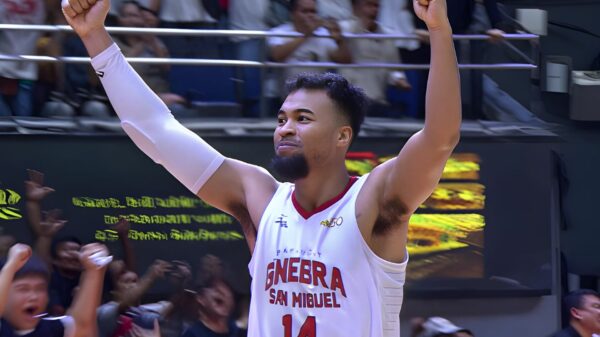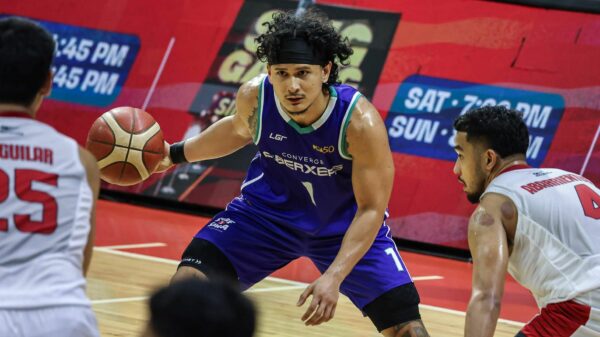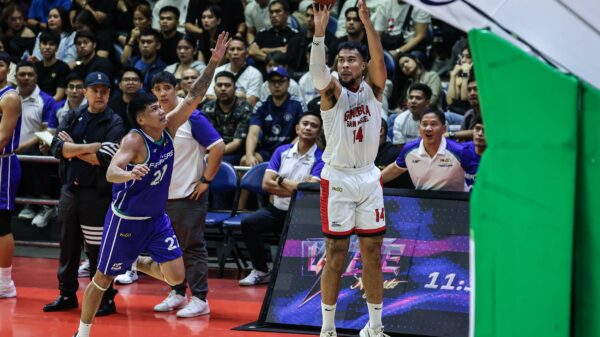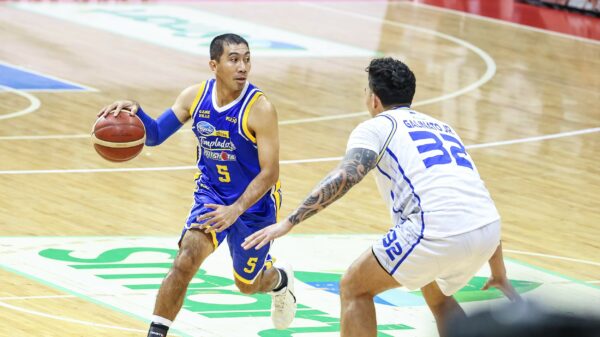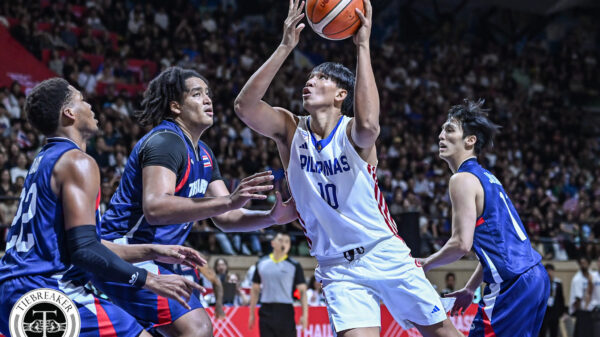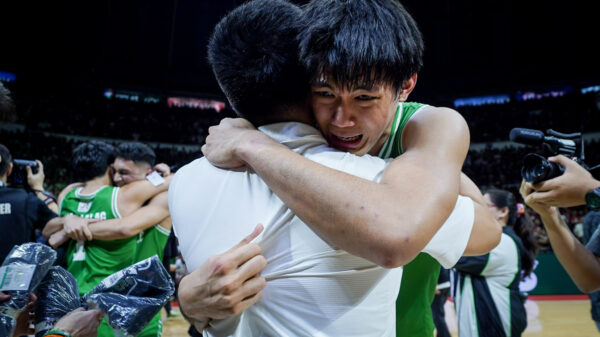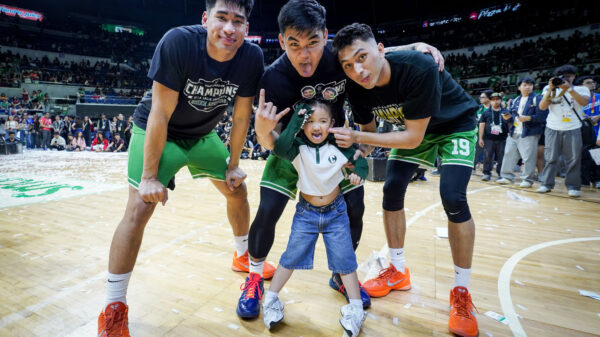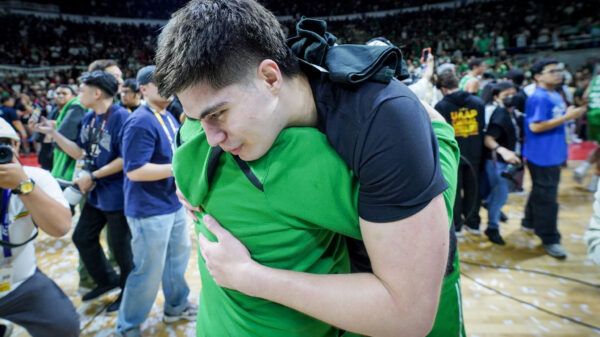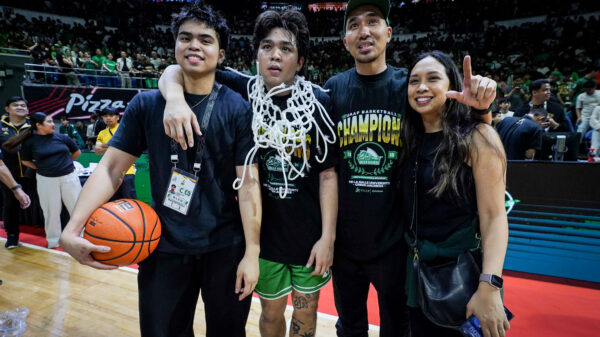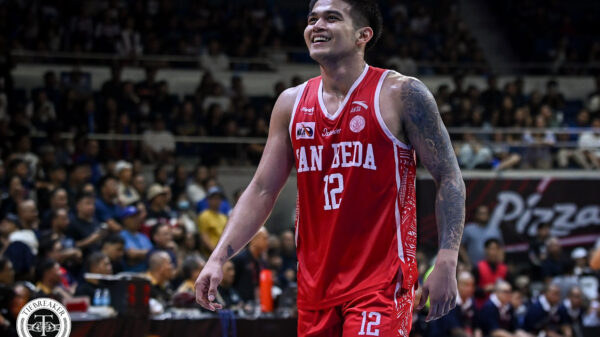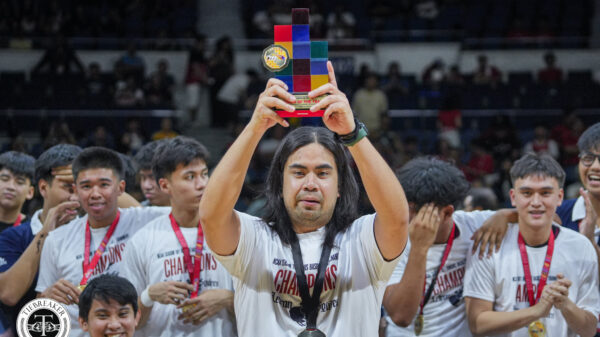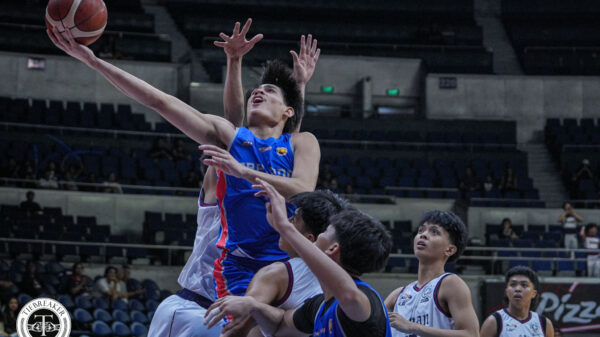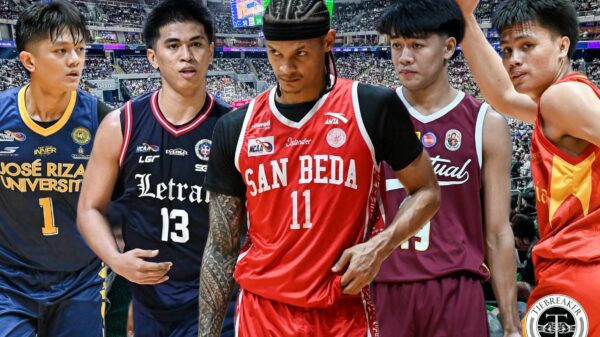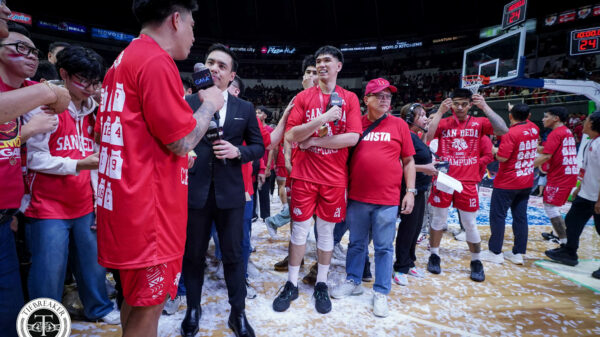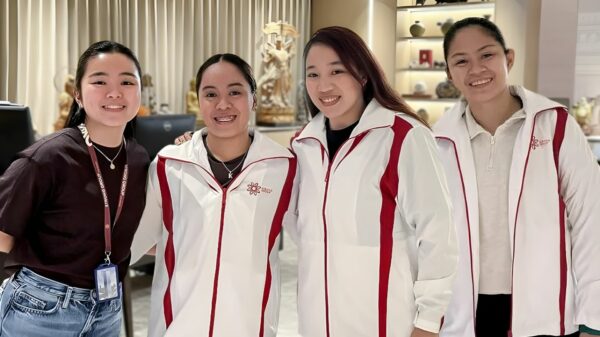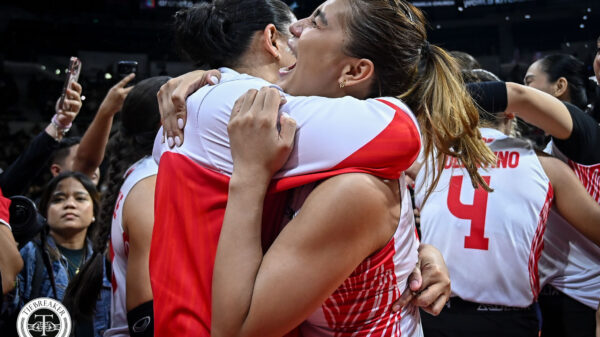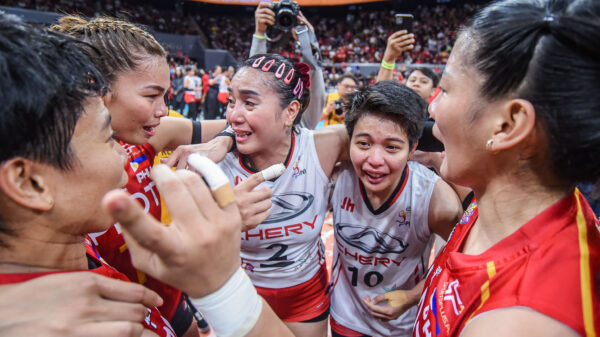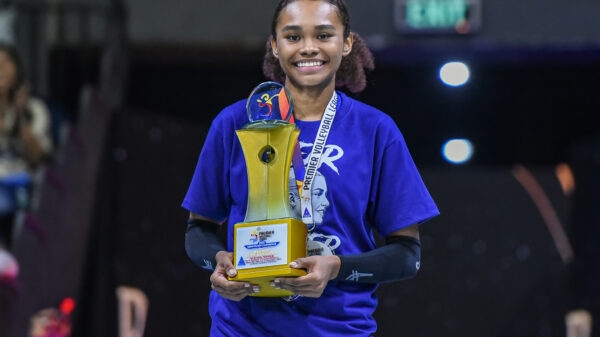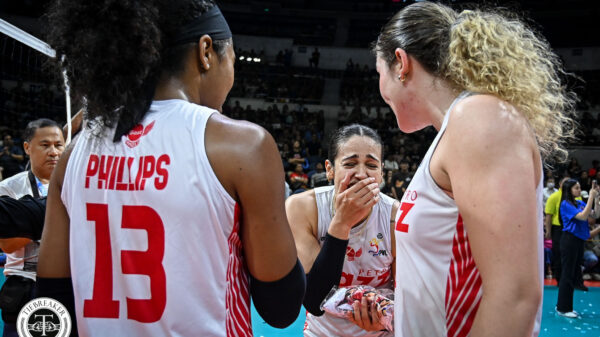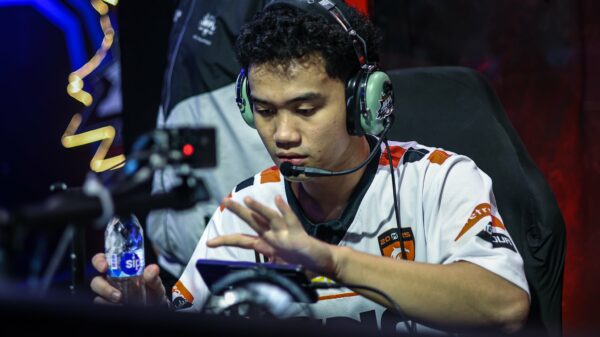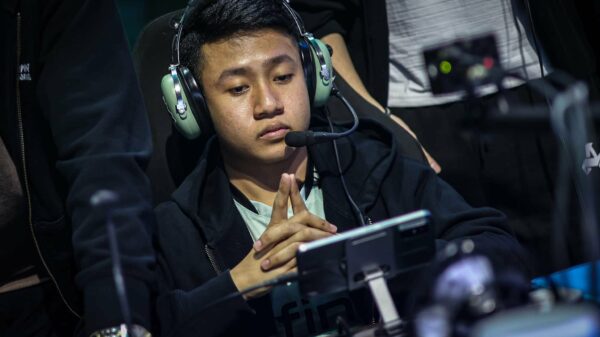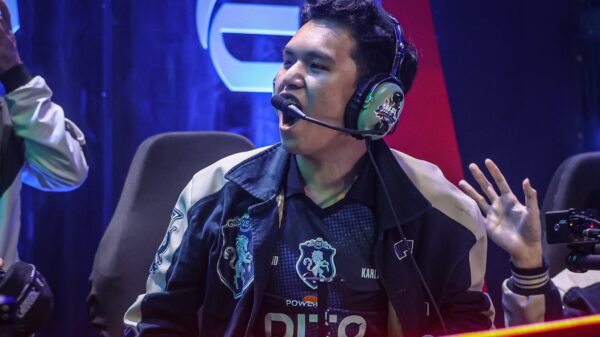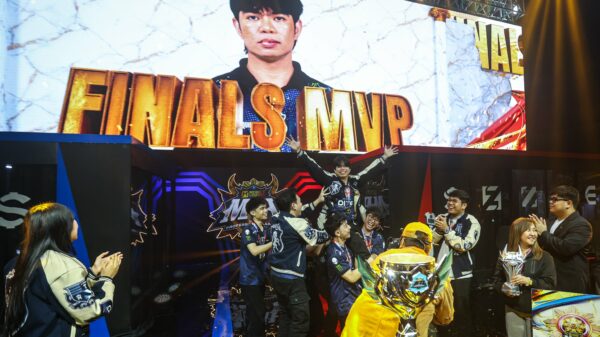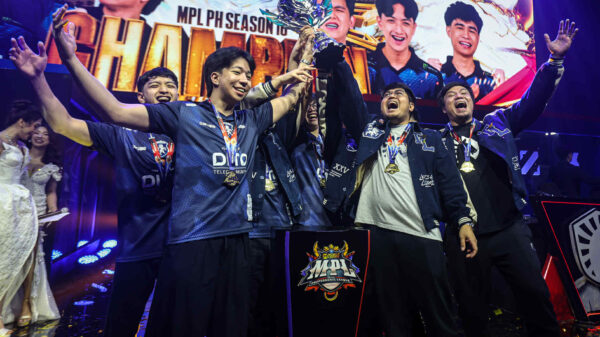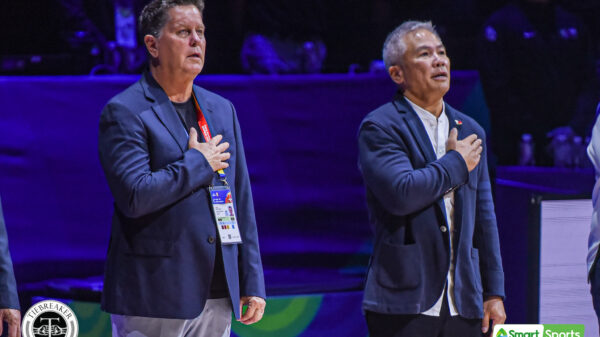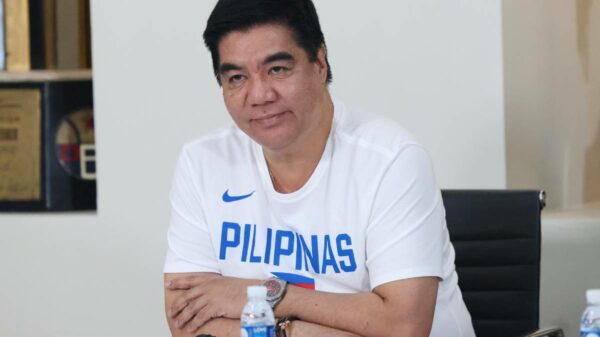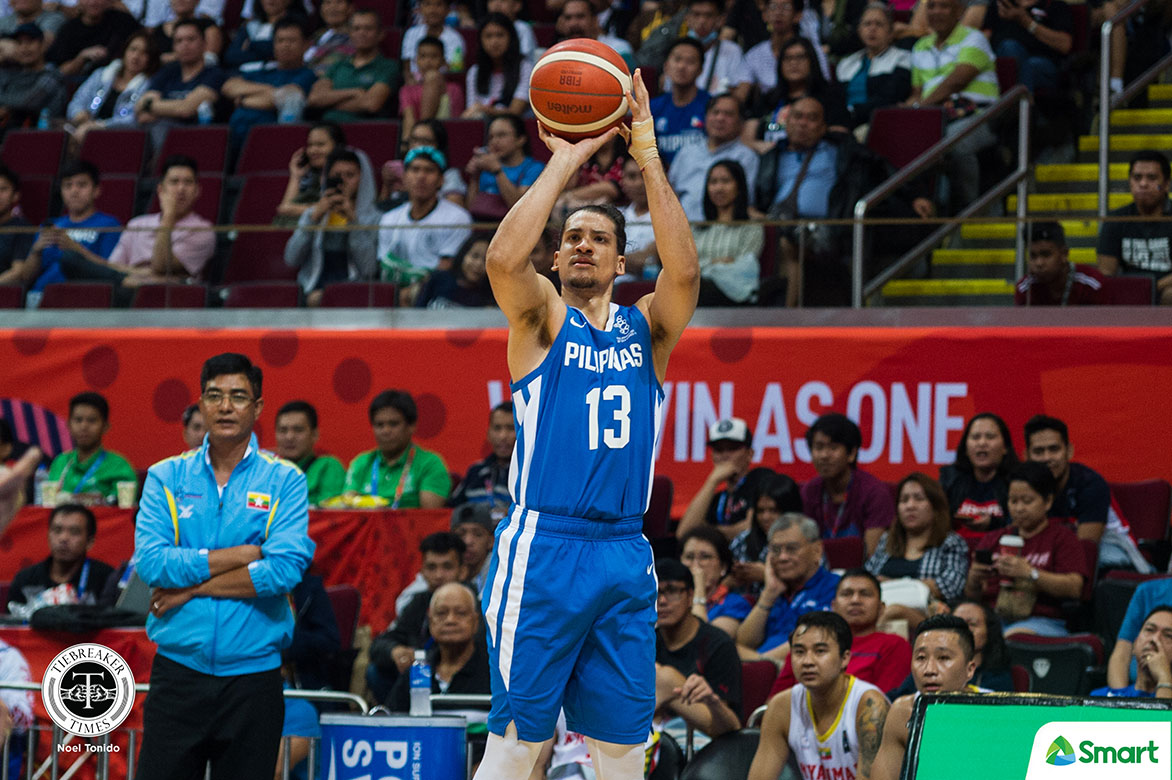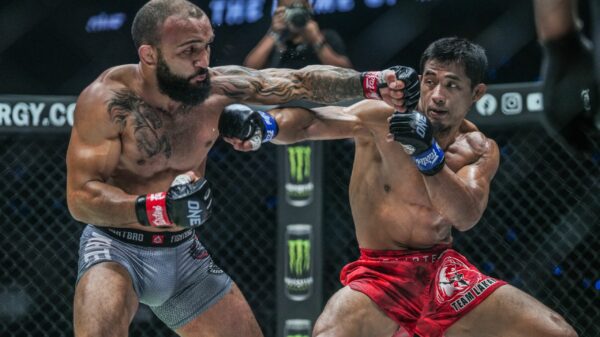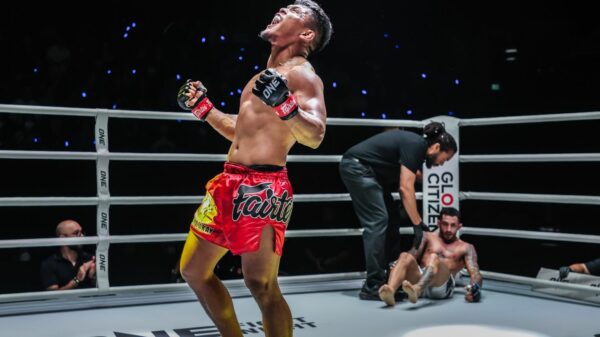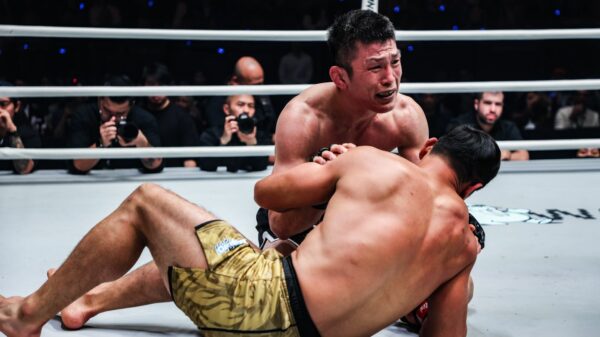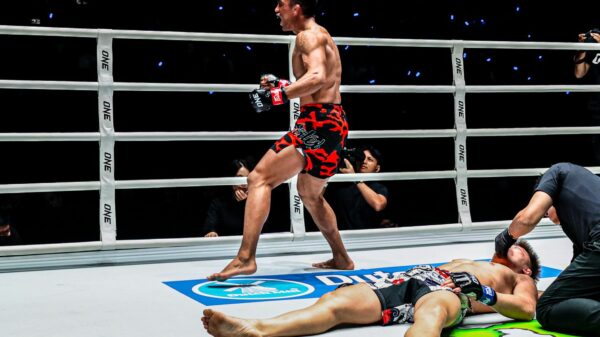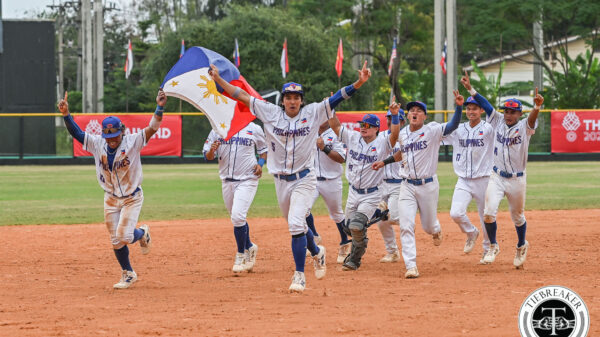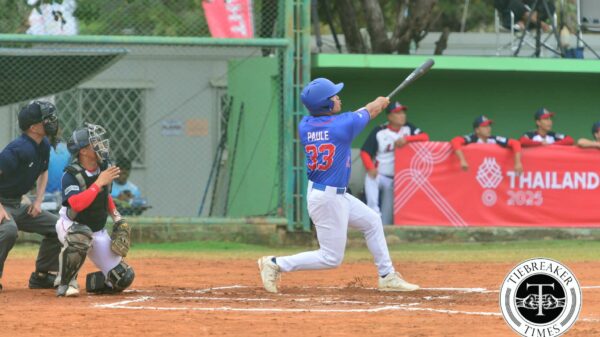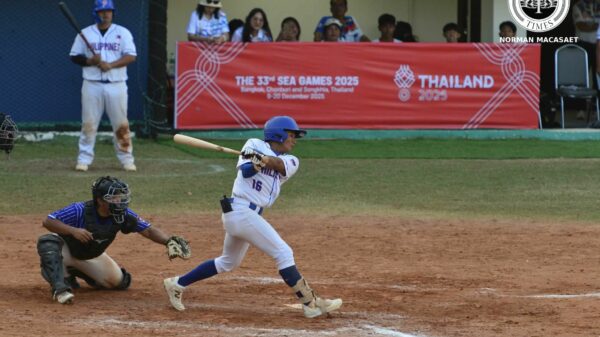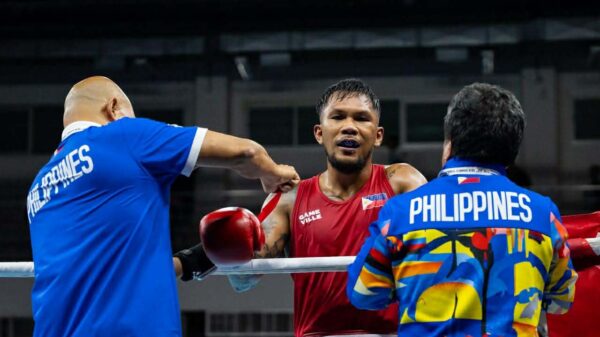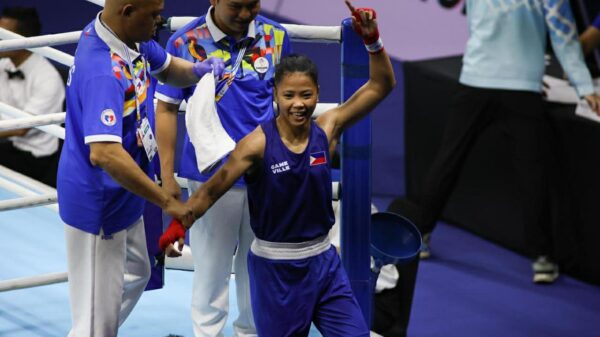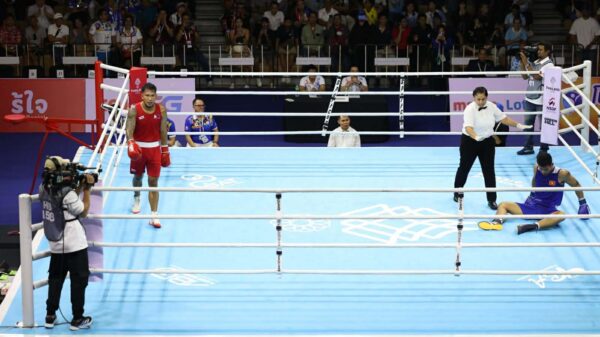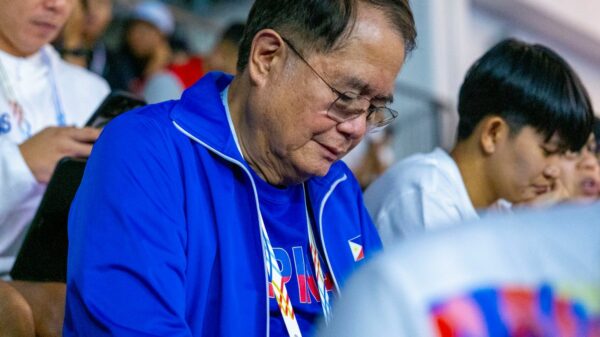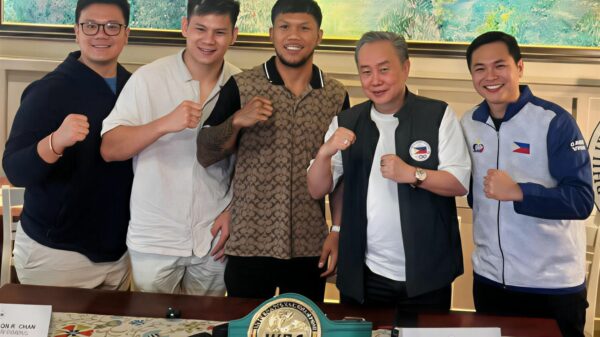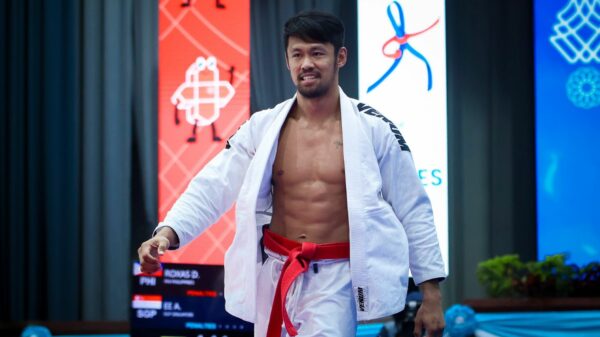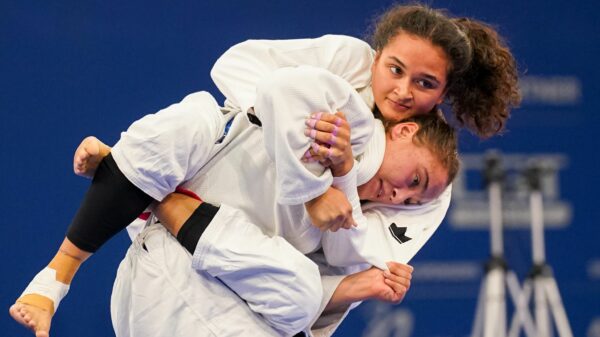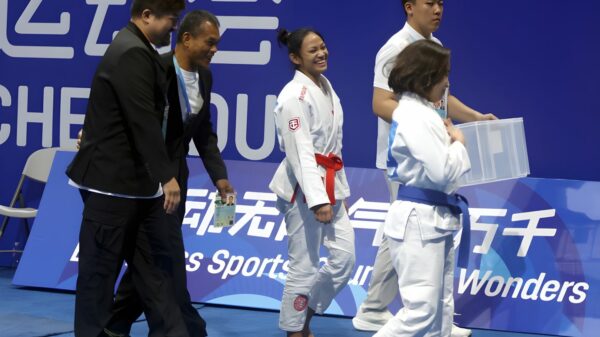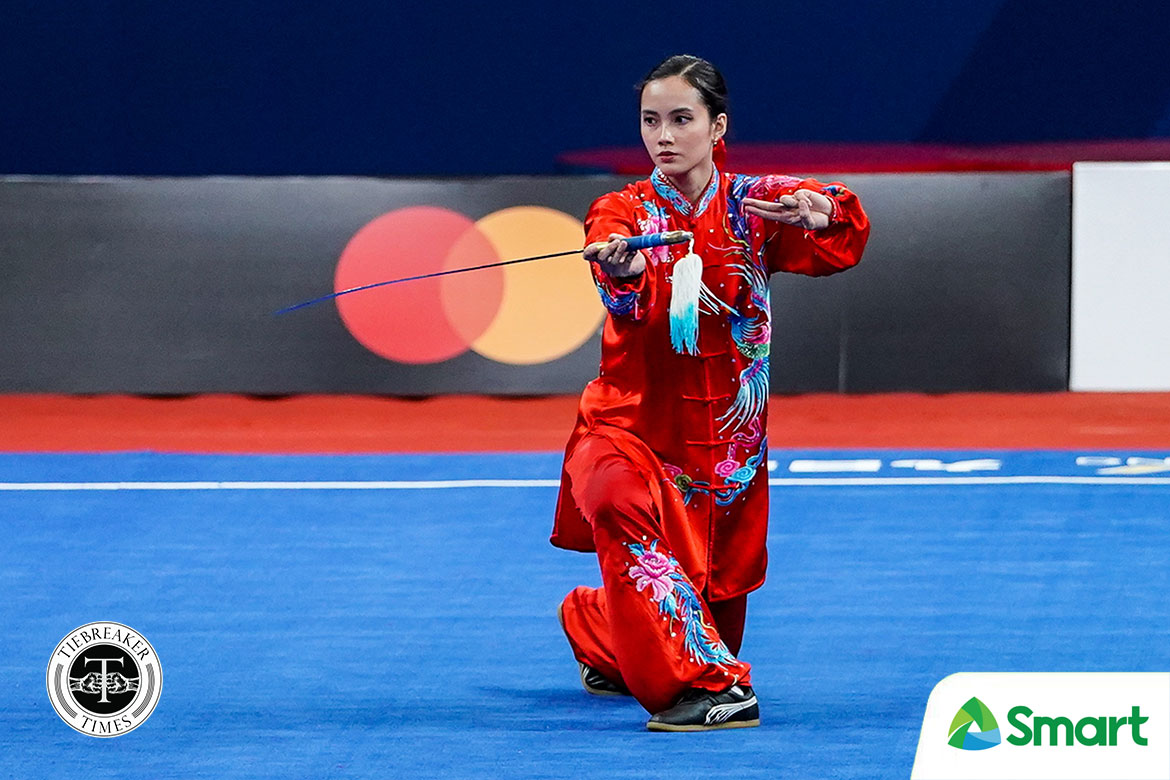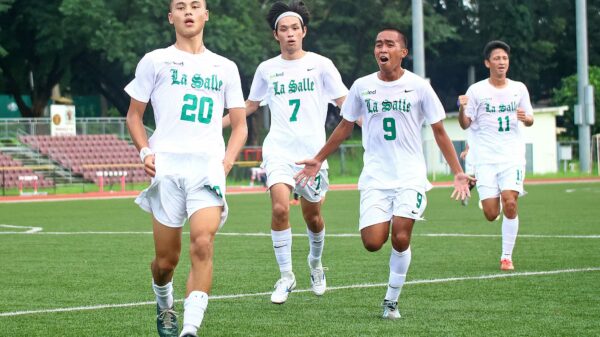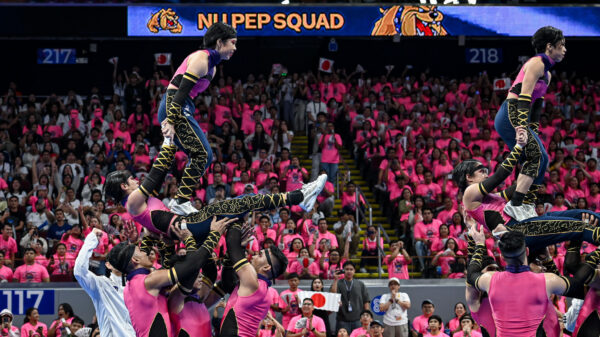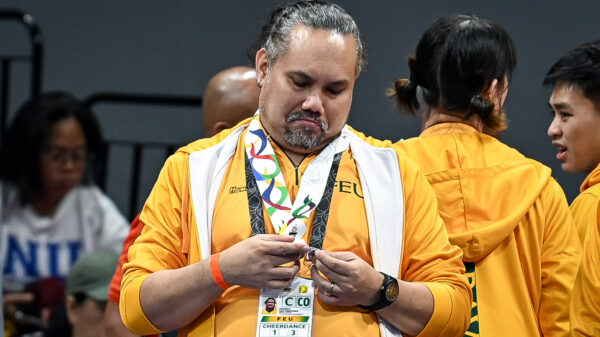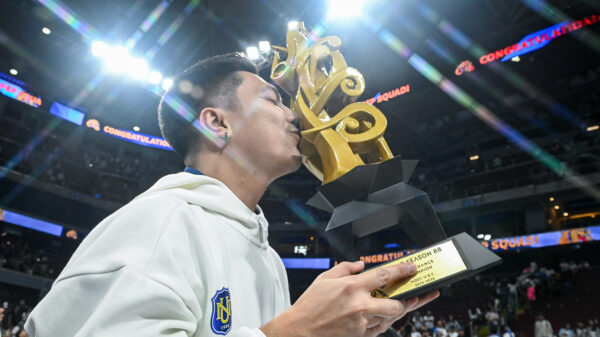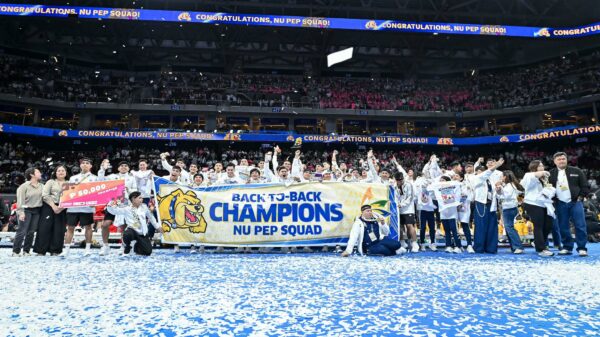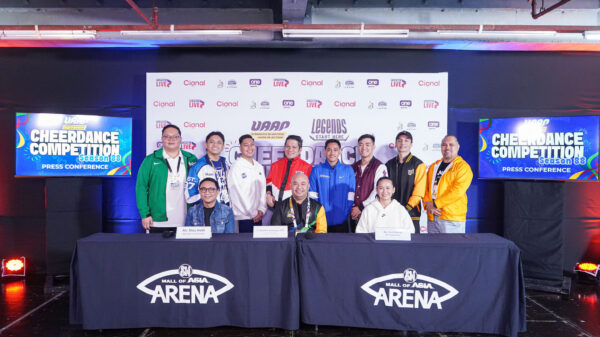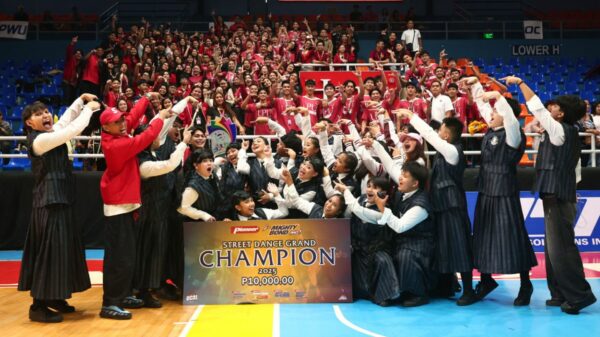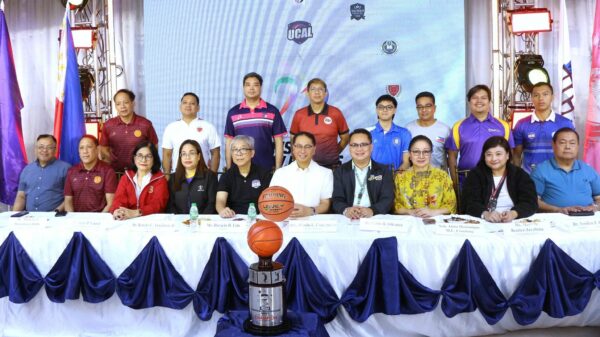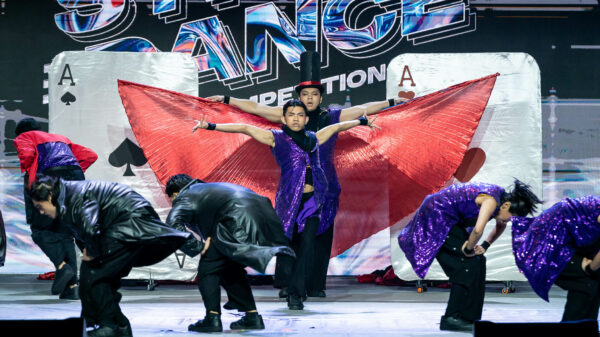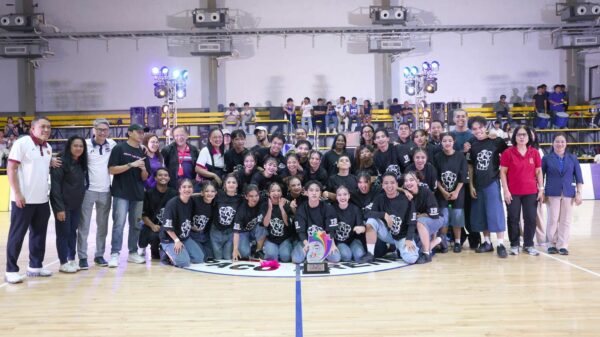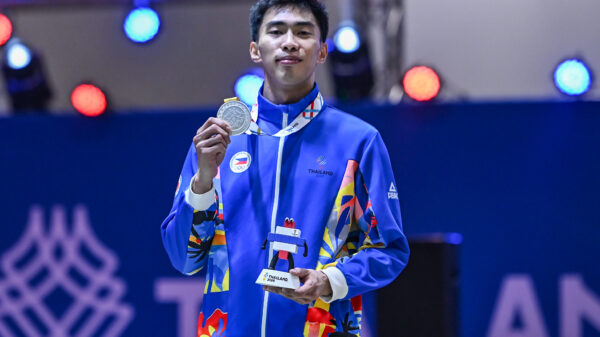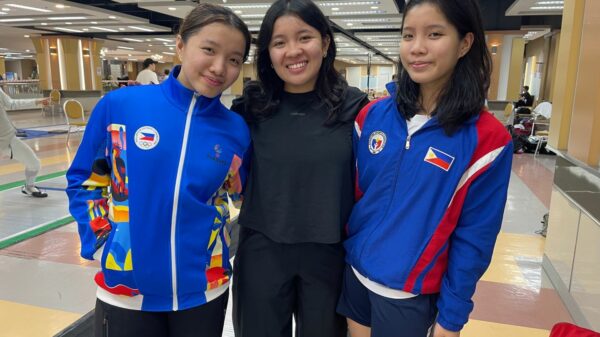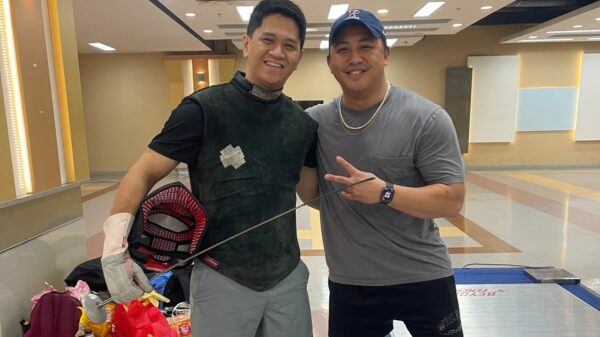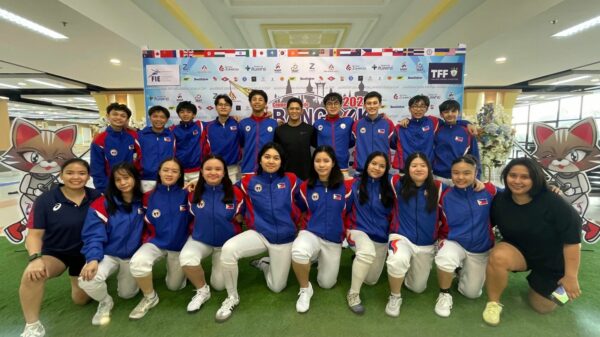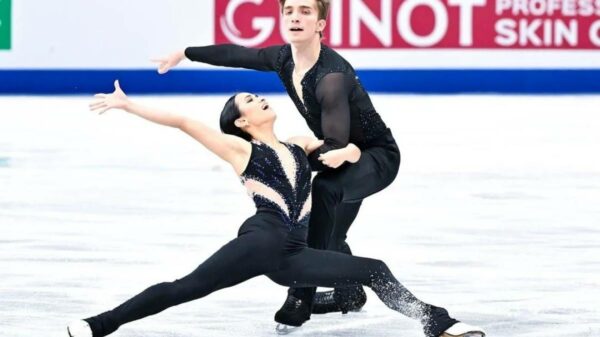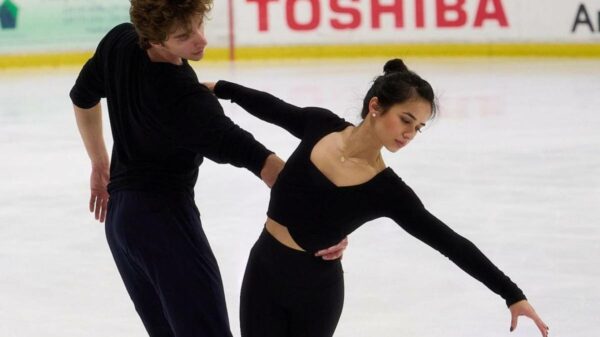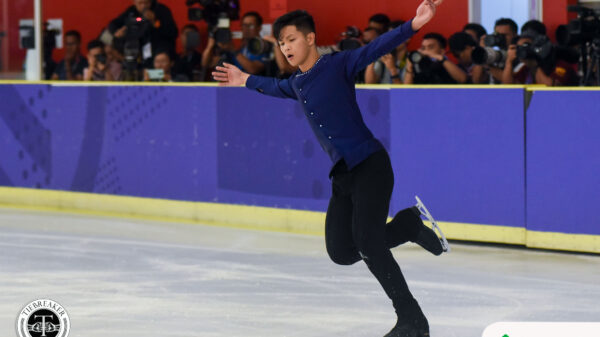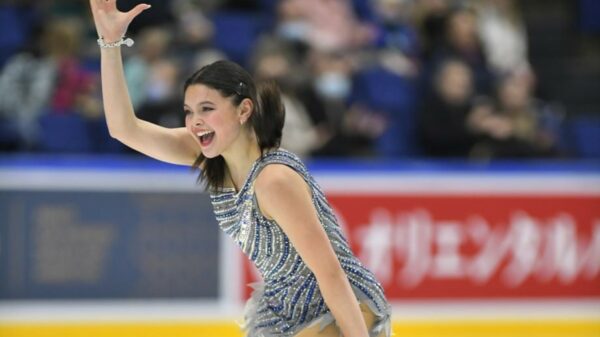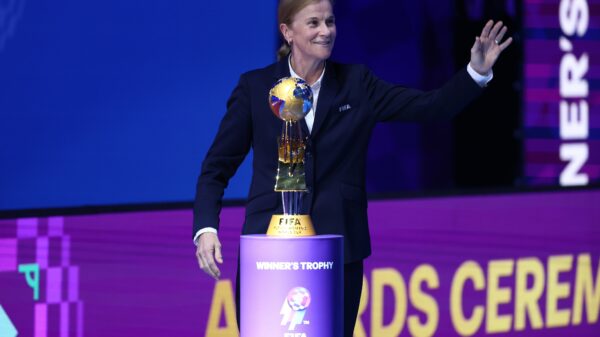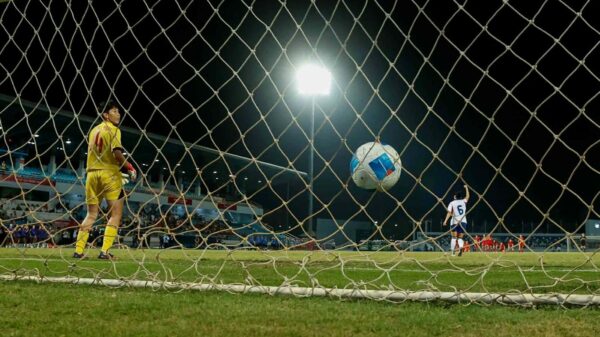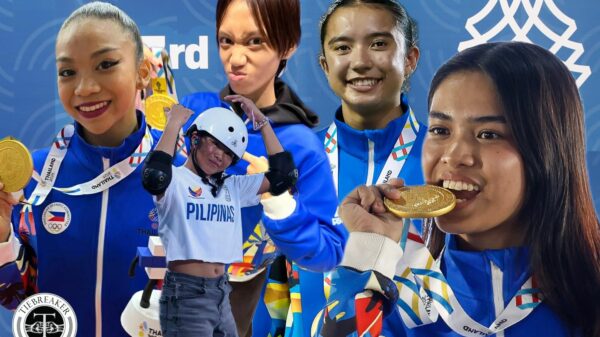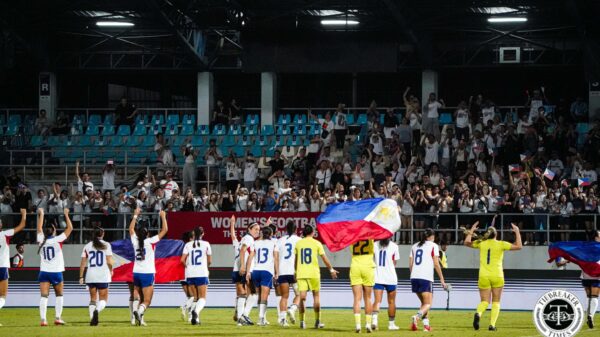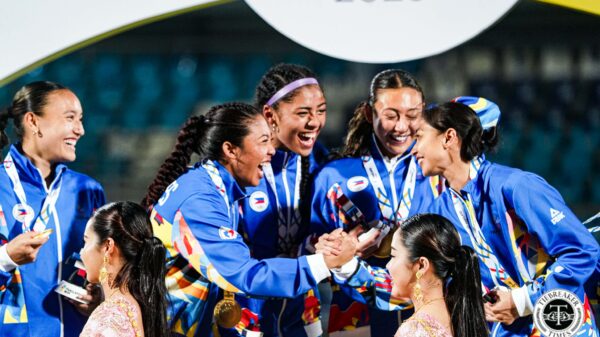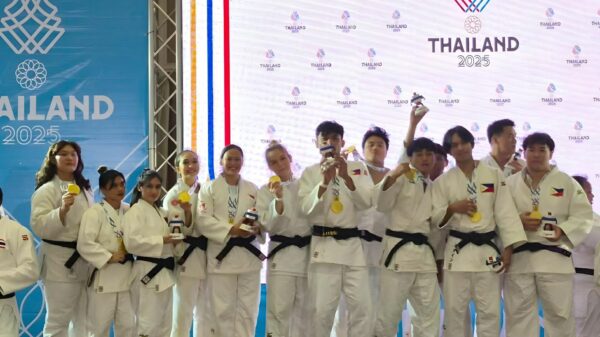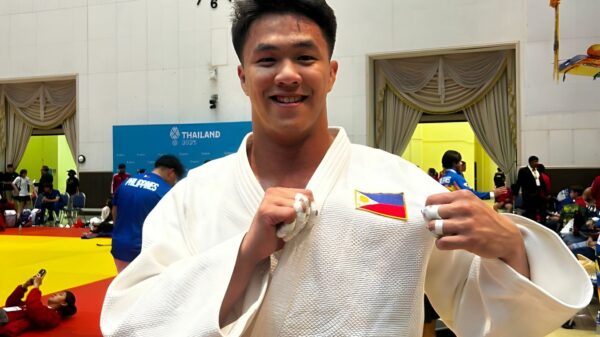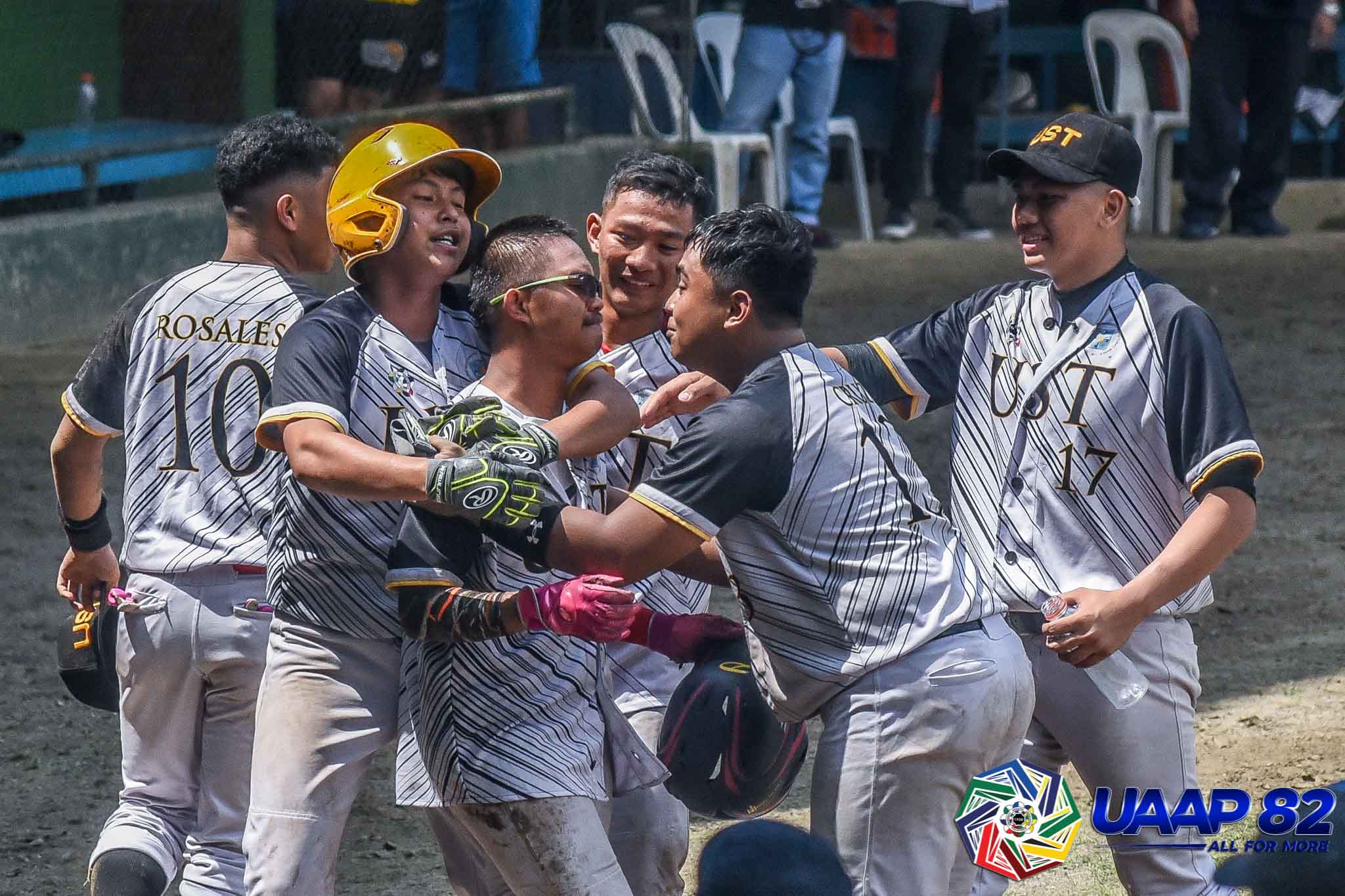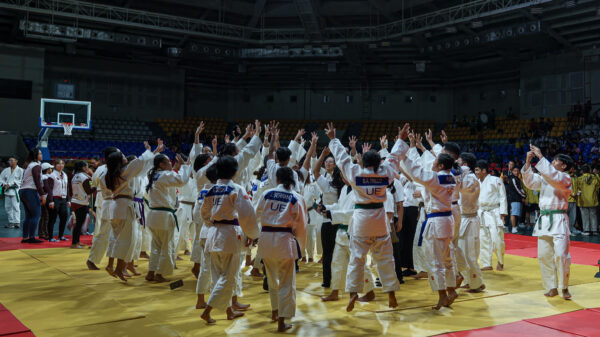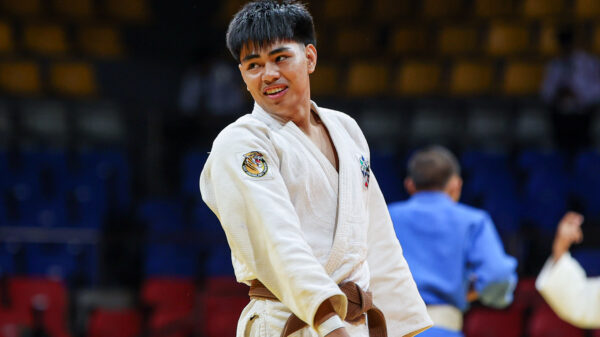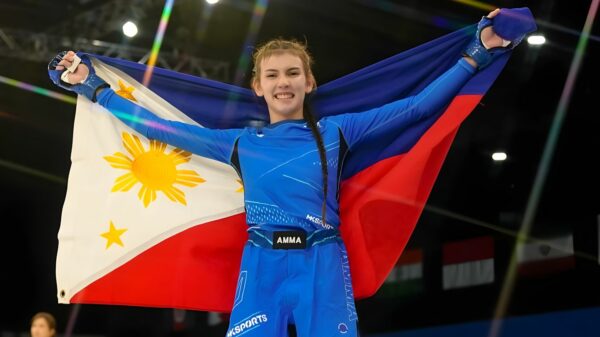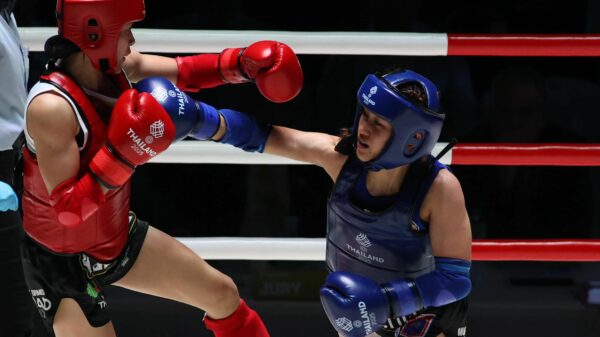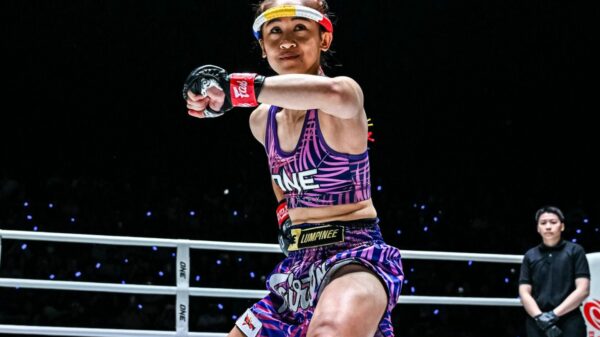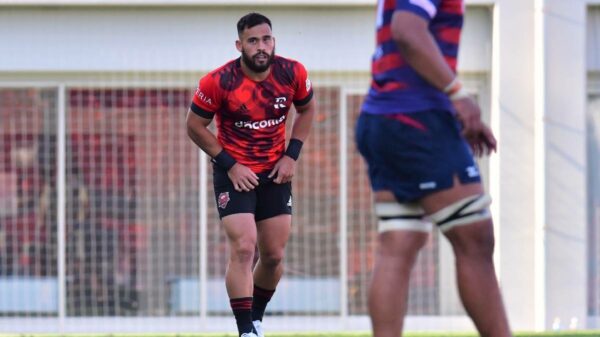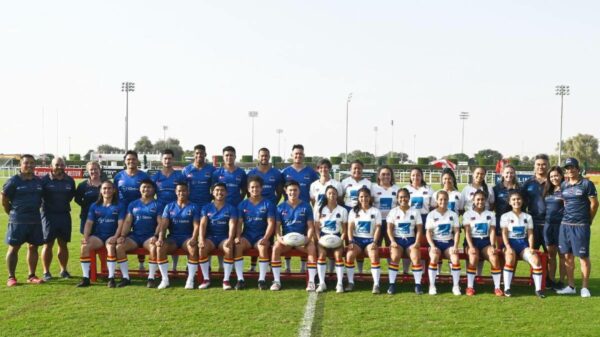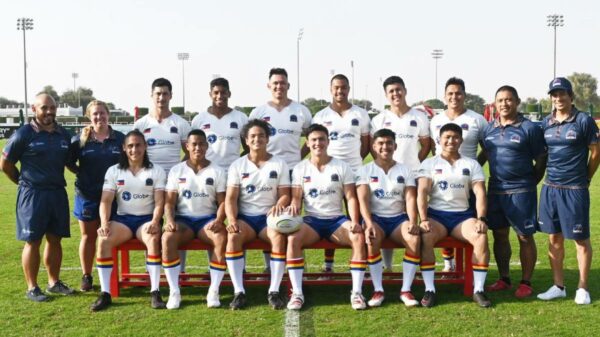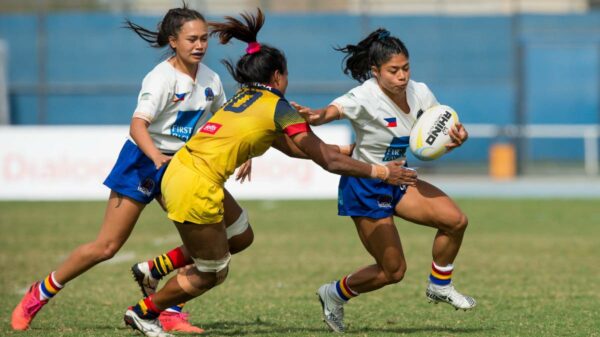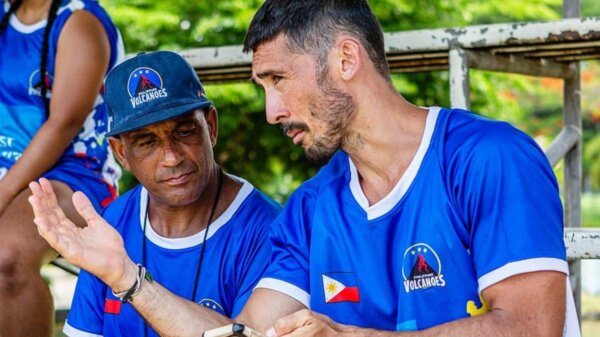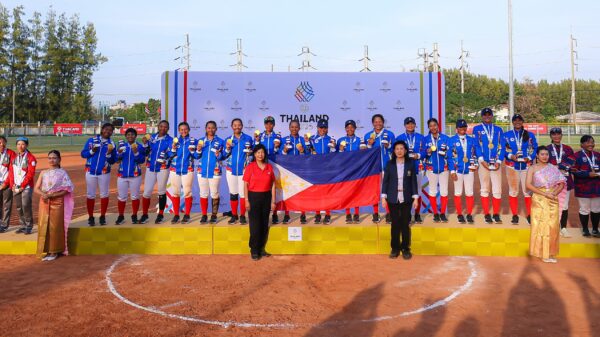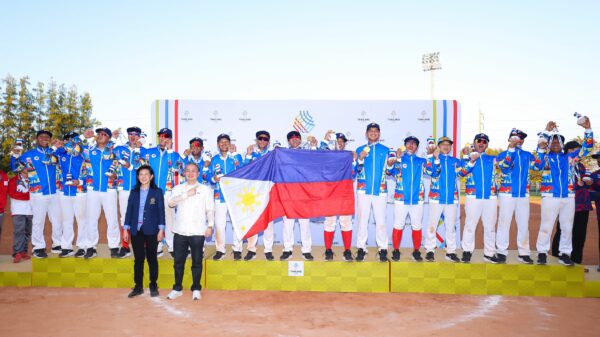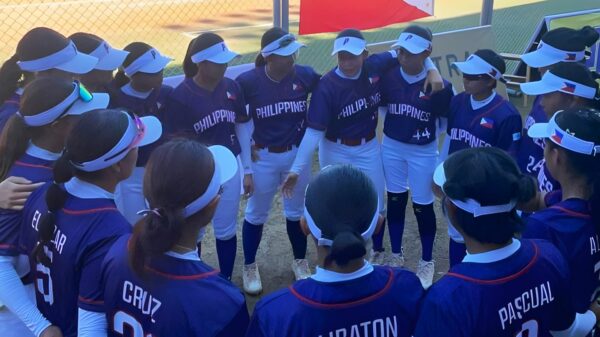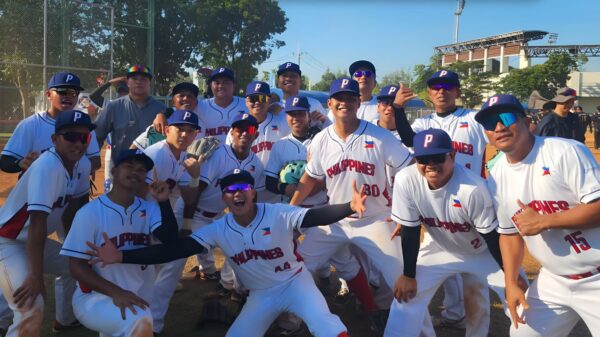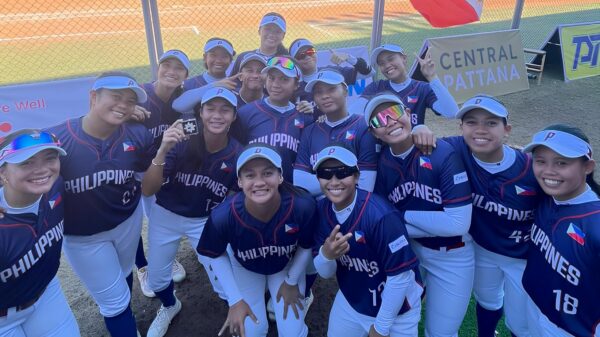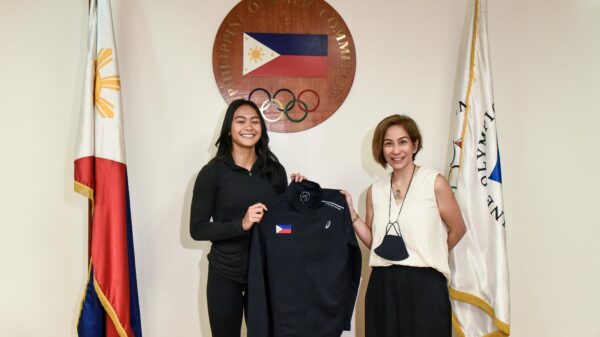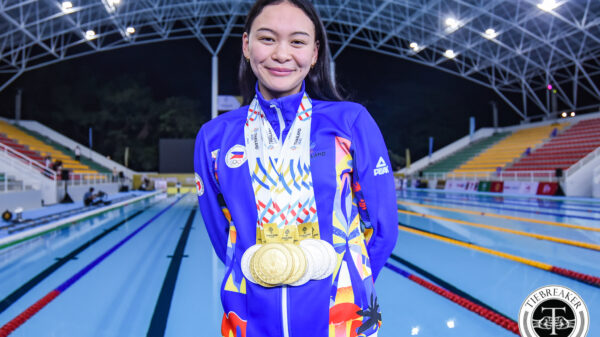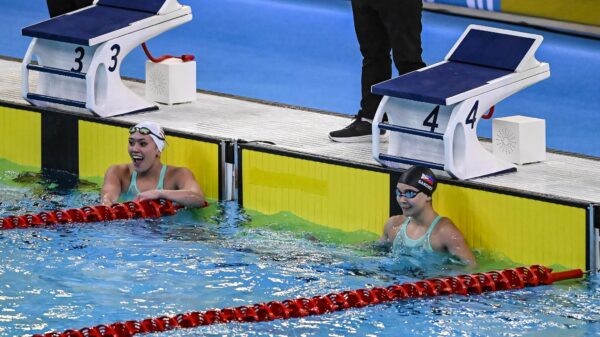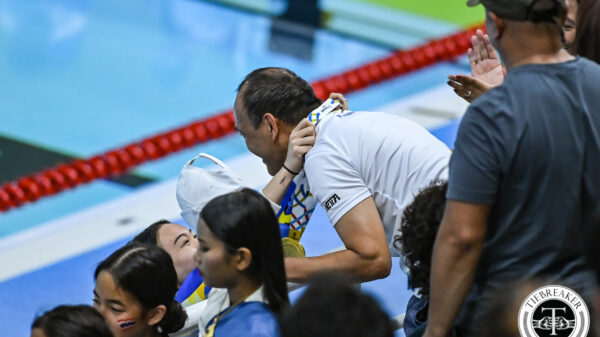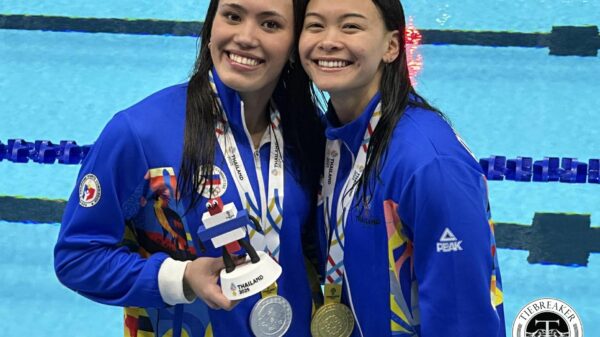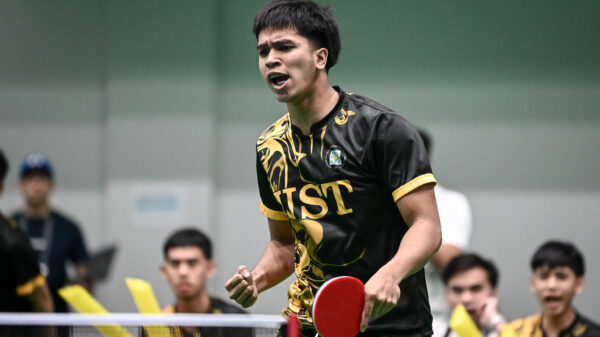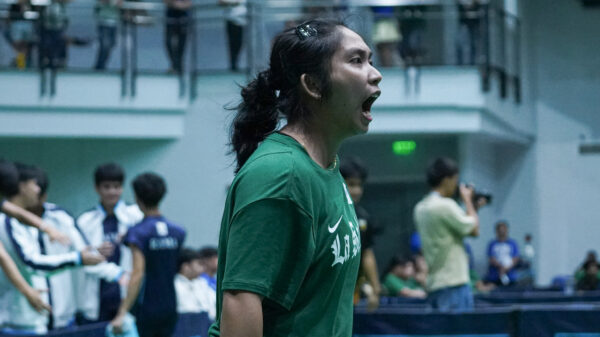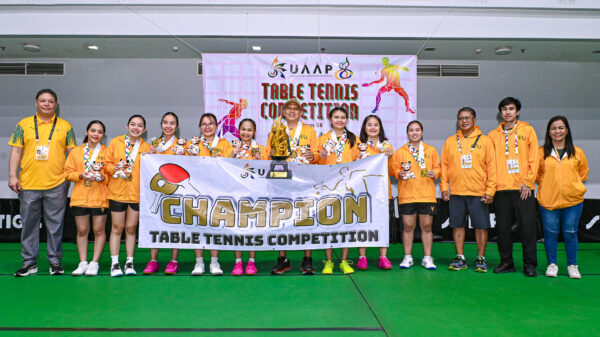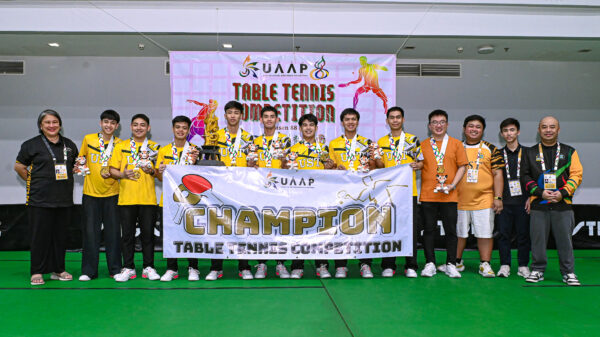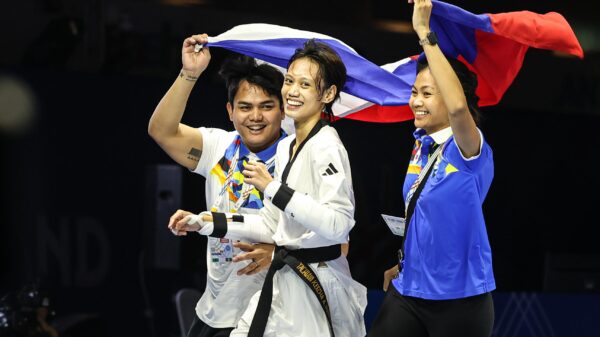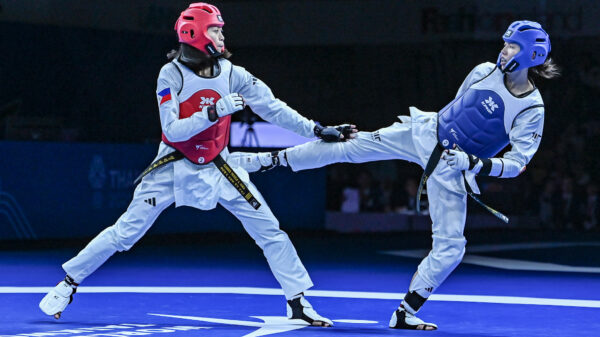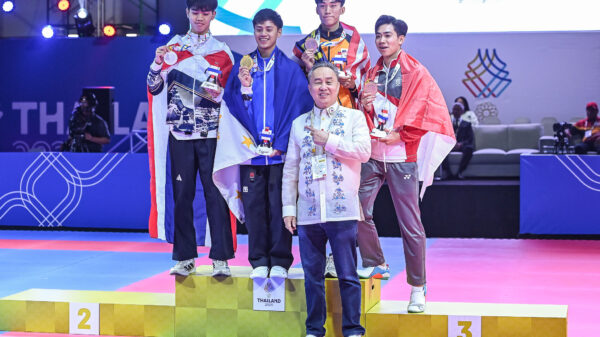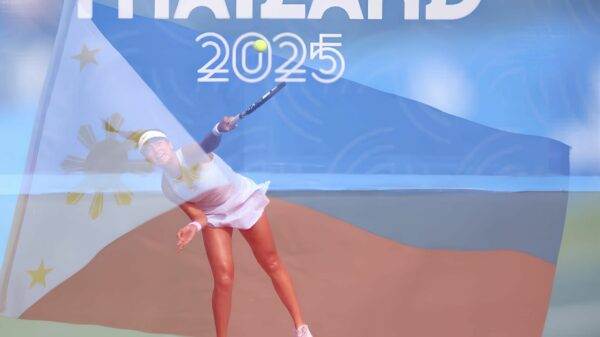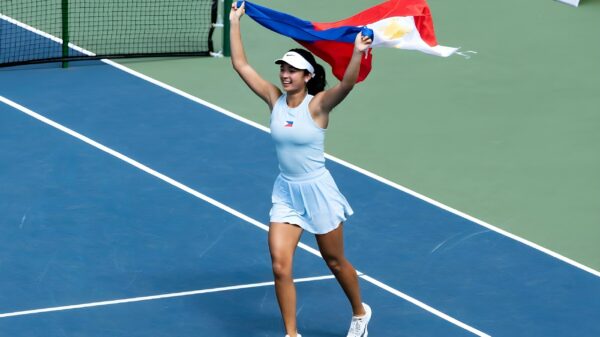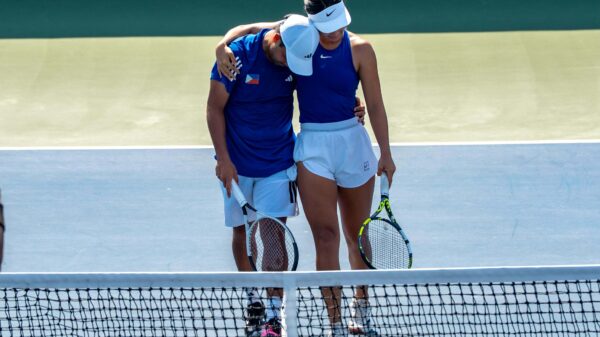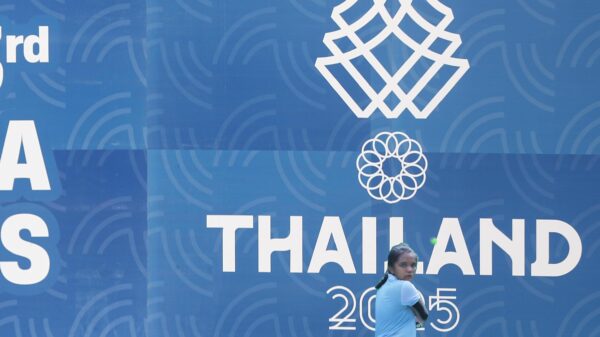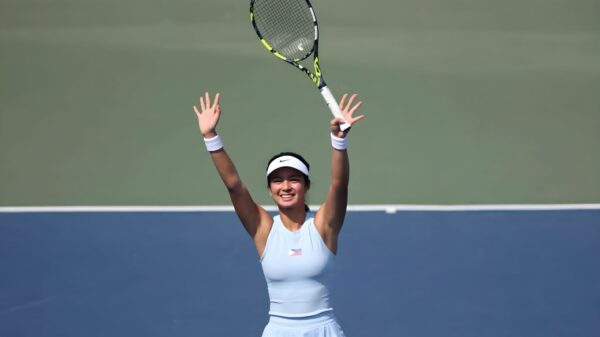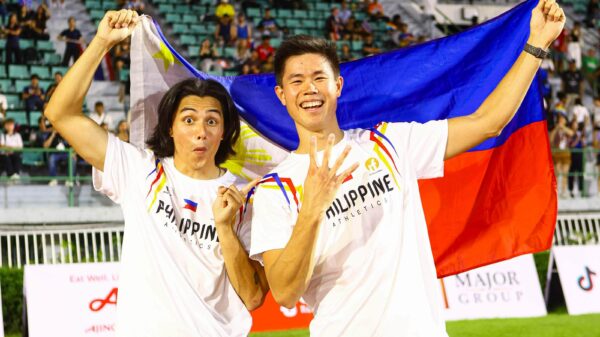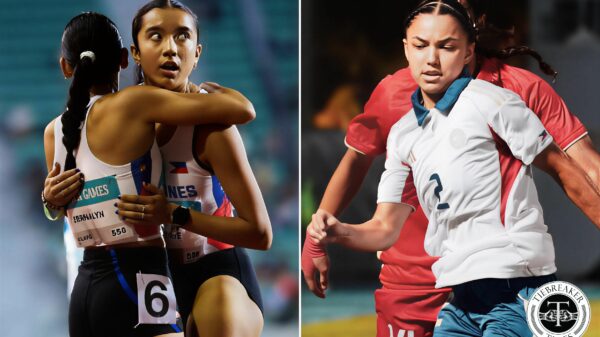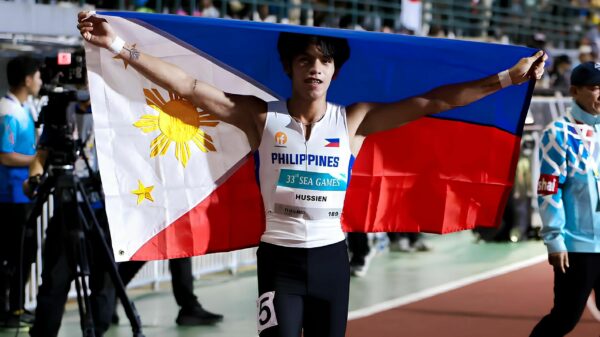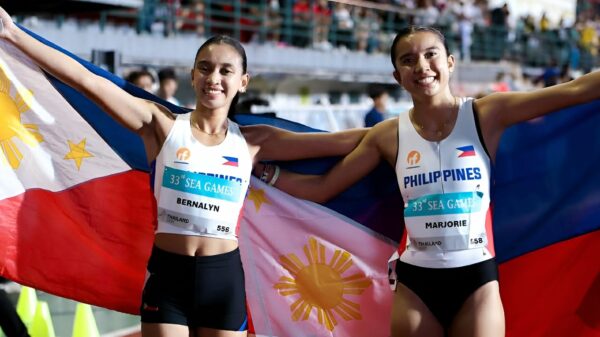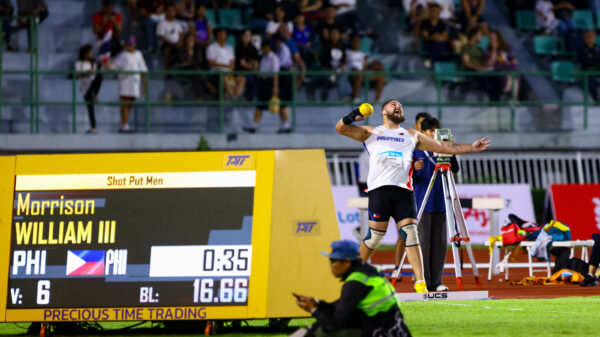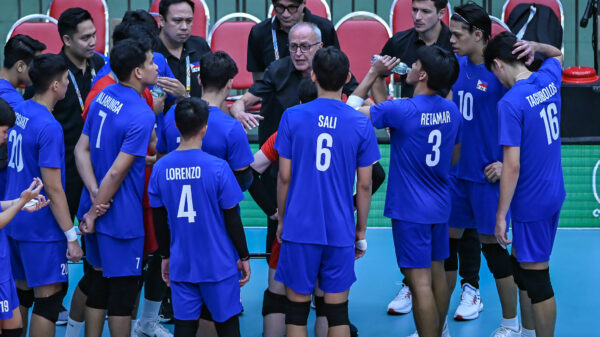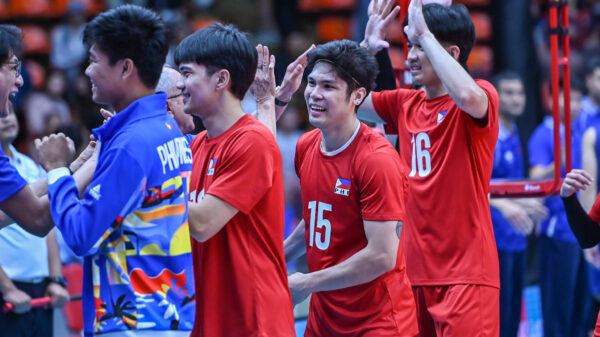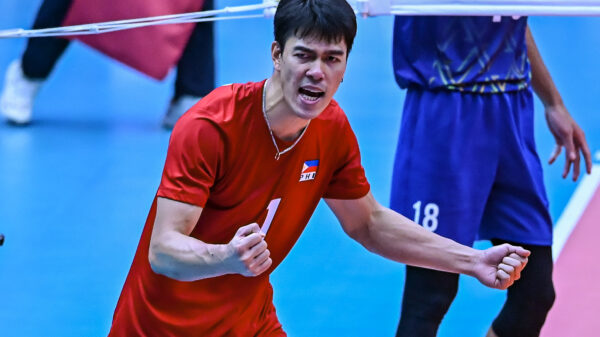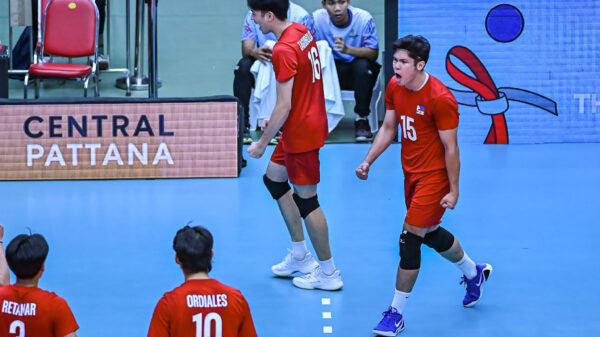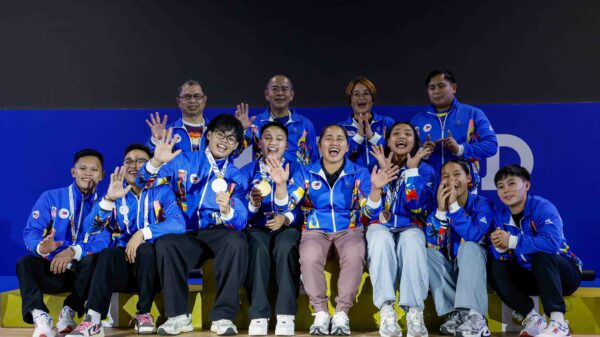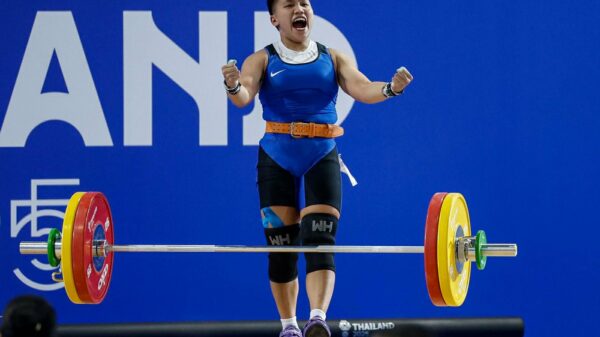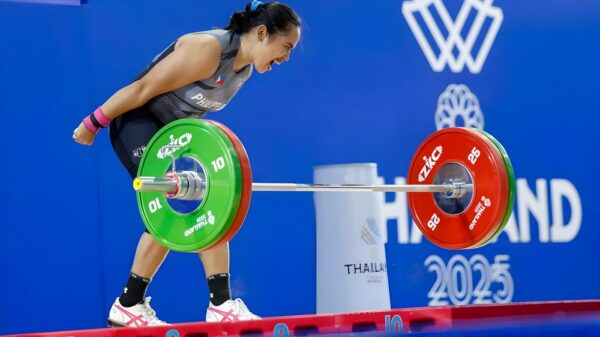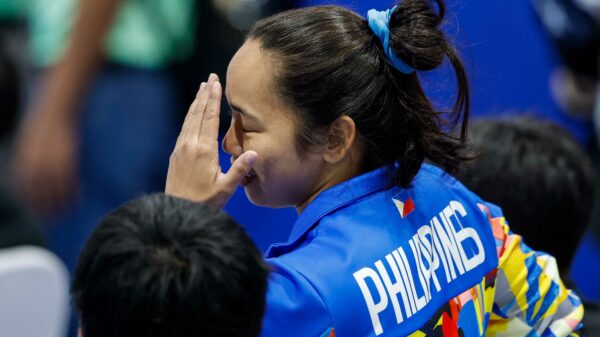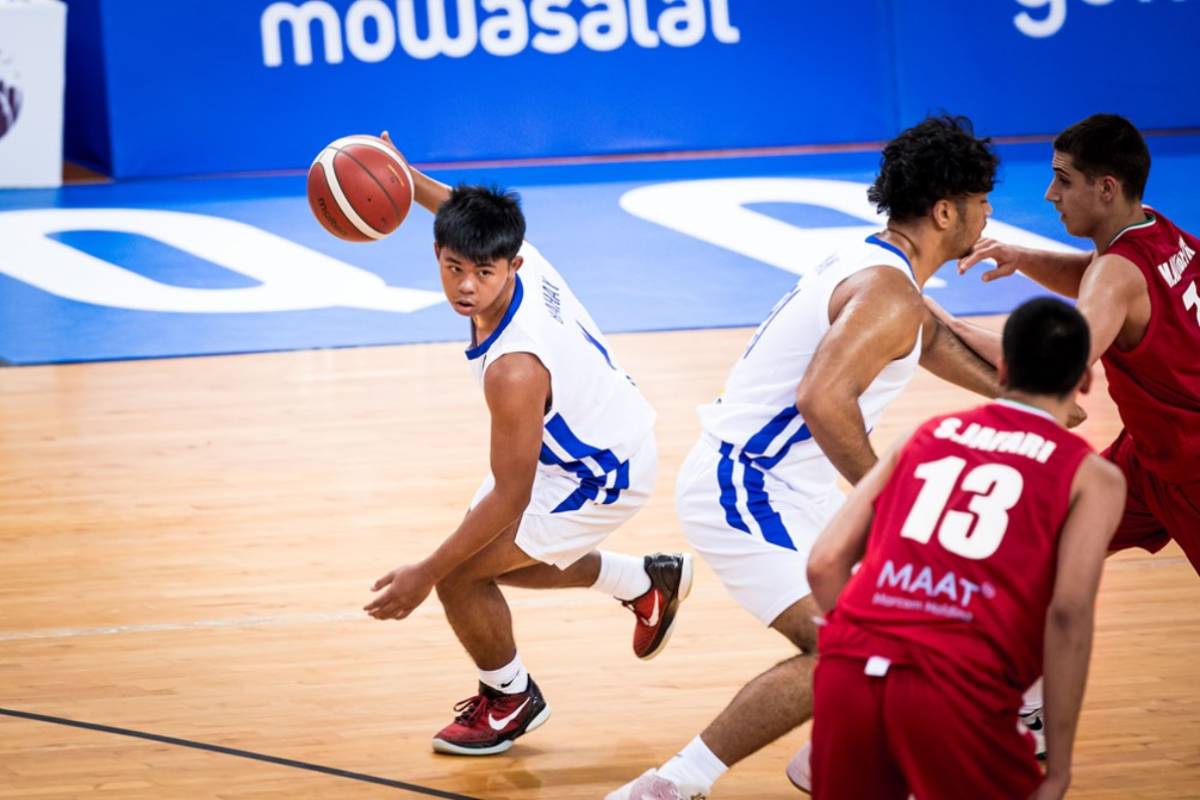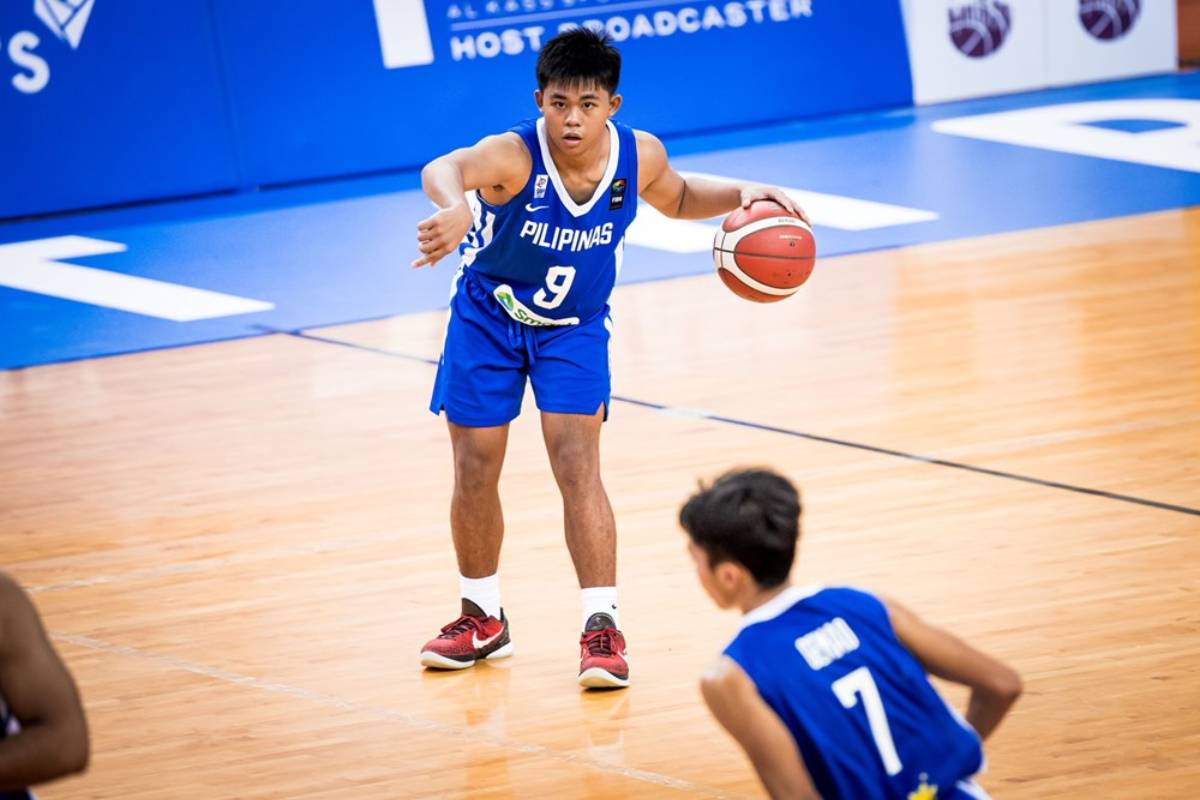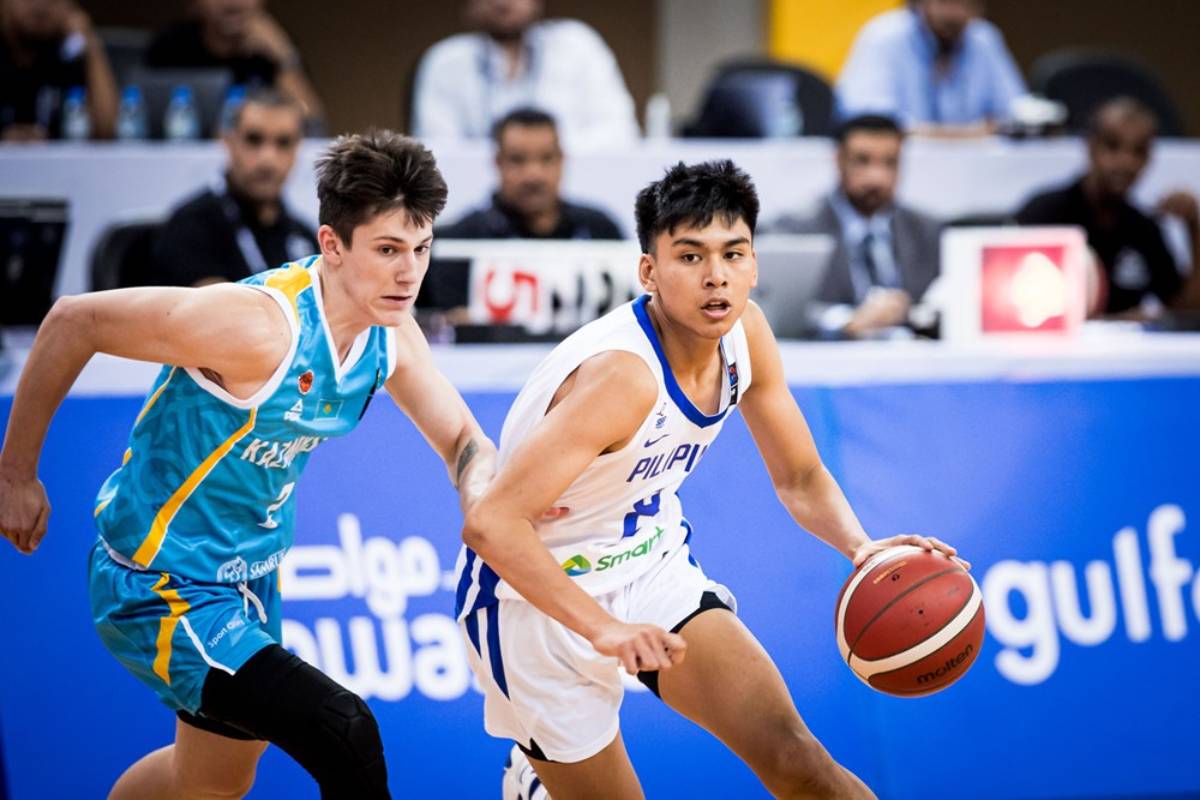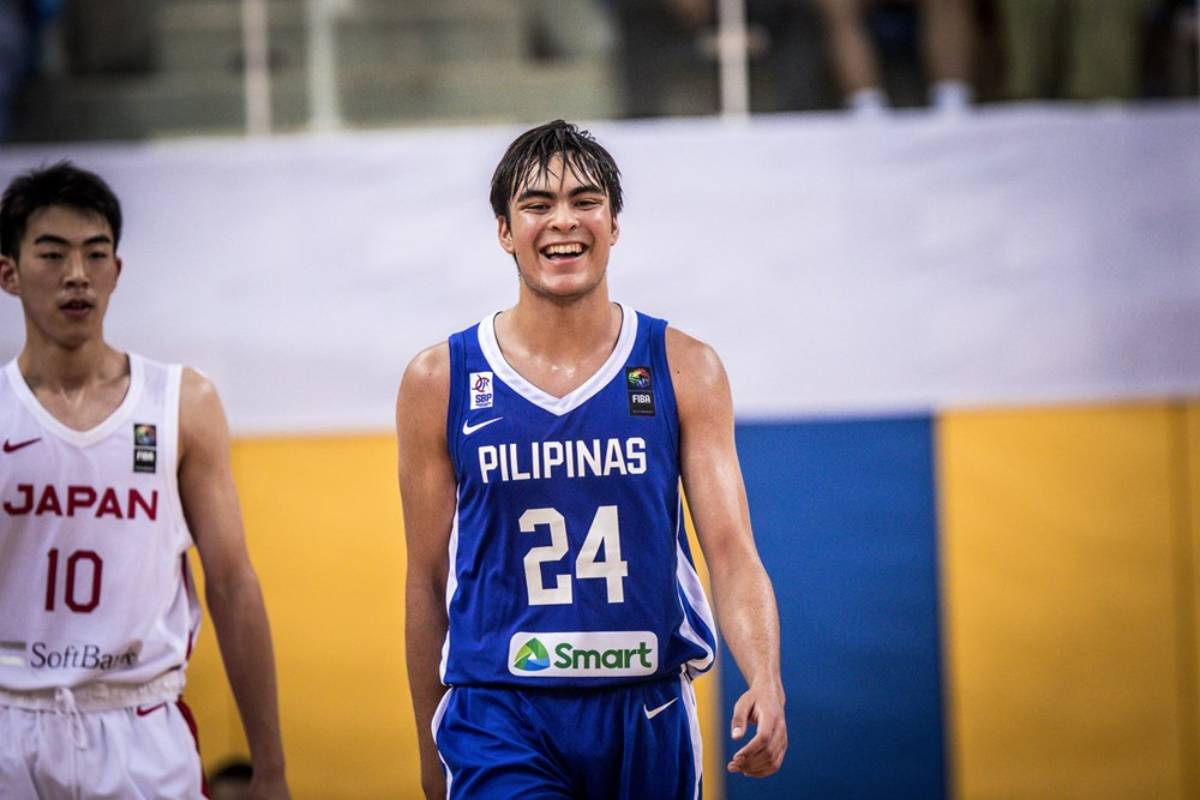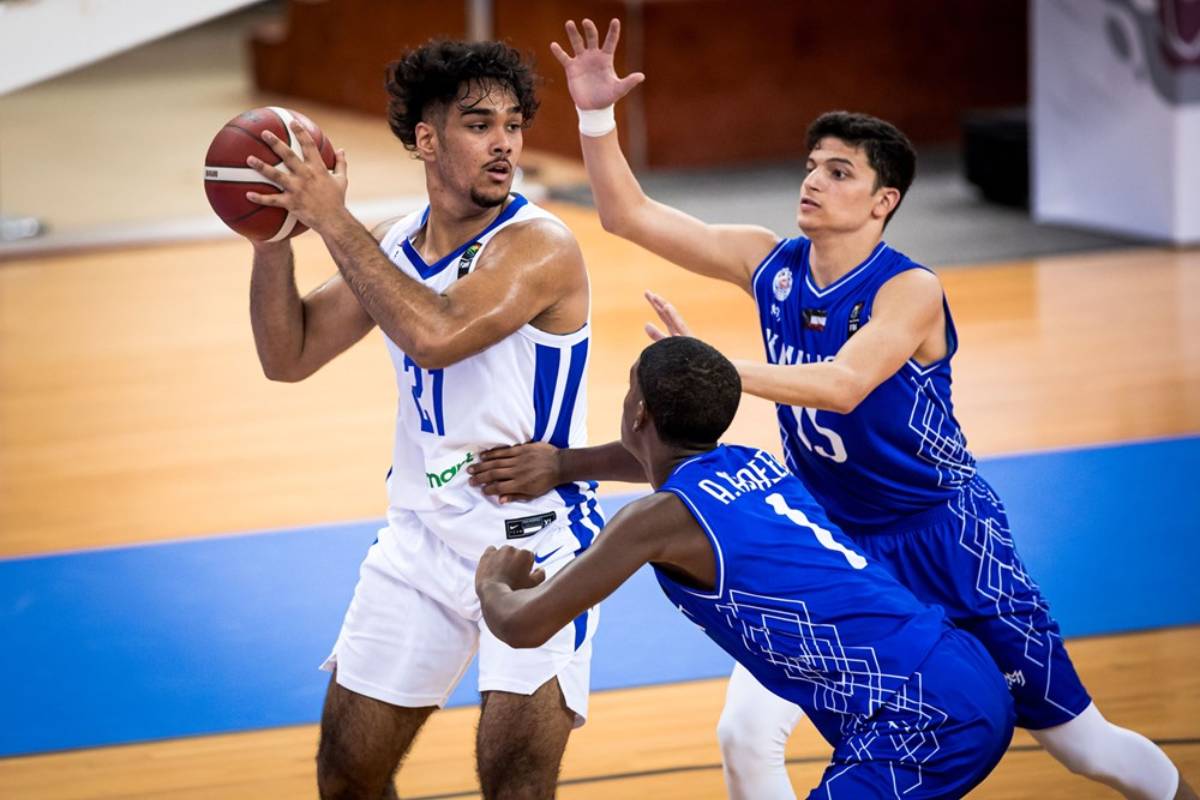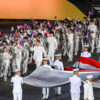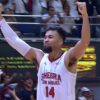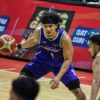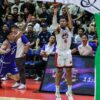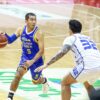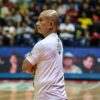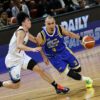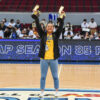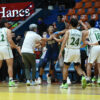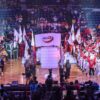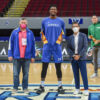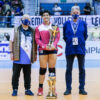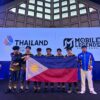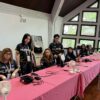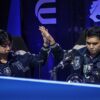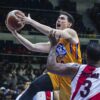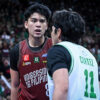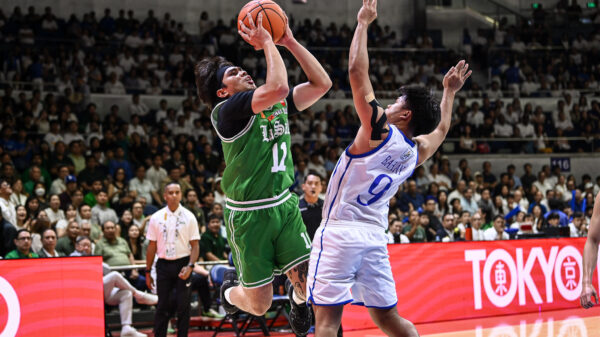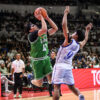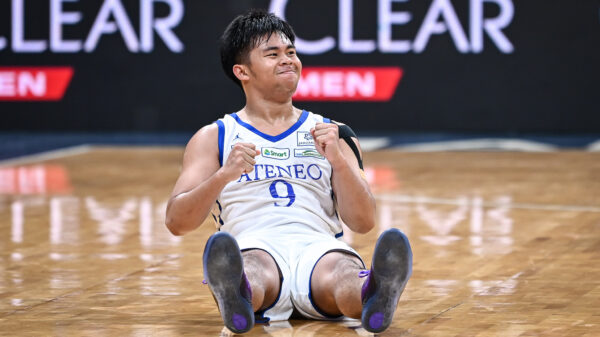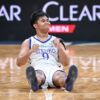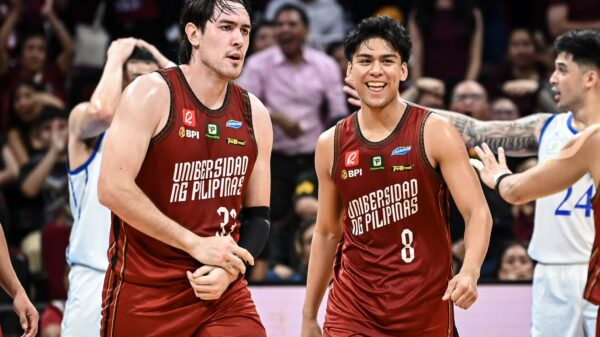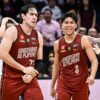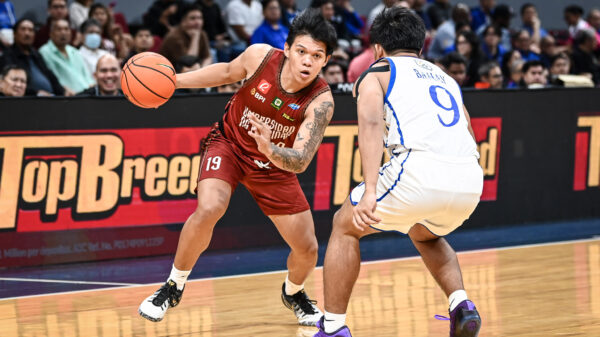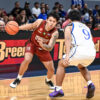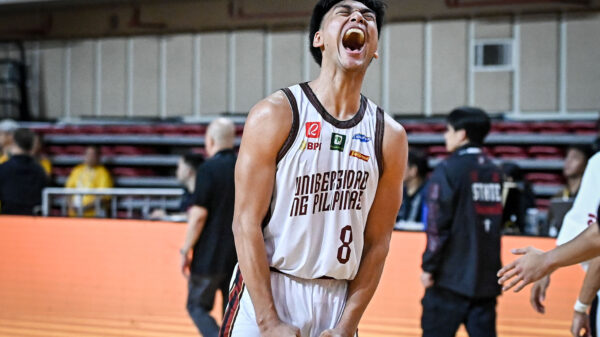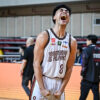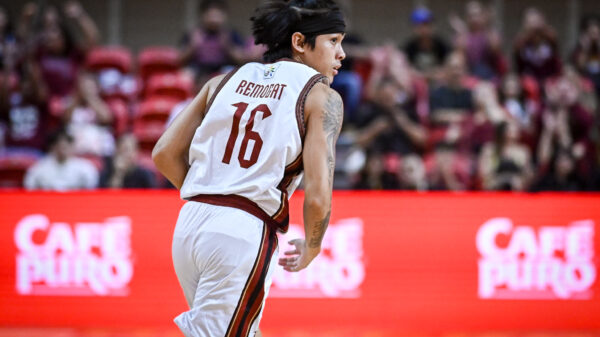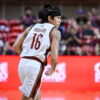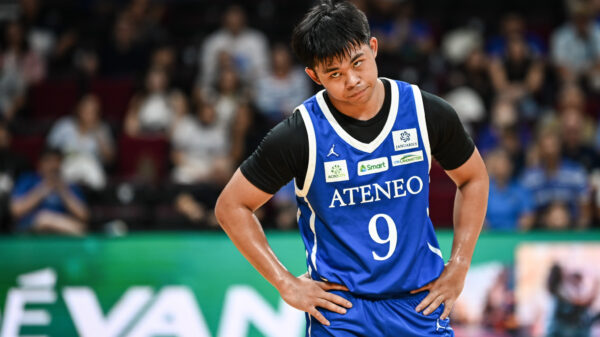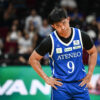There is nothing quite like youth basketball, where the allure of potential more than makes up for the lack of refinement. After all, uncut gems still shine.
The Philippines finished seventh in the recently-concluded 2022 FIBA Under-16 Asian Championships, which was the country’s lowest finish in the event since its inception in 2009. But does this mean that the team (and thus, the players) were not good? Far from it. They were competitive against the two finalists in the tournament, and if a few things went their way, they would have been en route to the Under-17 World Cup. Don’t let the “low” finish fool you – these boys are very talented.
And that’s why we’re here: to talk about the players that stood out. The 12-man lineup was full of talented players who have the makings of good basketball players, but in the interest of time, let’s talk about the six players that could (and should) be getting offers from US college teams and/or make major impact in the local leagues.
In the finale of this series, we’ll talk about Jared Bahay, Jacob Bayla, Alex Konov, and Zain Mahmood.
Jared Bahay: Ready for the Big Leagues
The first things you will notice when you watch Jared Bahay play is the acceleration and the physique. His ability to quickly speed up in the halfcourt is the weapon he resorts to most often to score. This straight-line speed allows him to get to the cup. Despite his height, he has a lot of craft when finishing up close. He can change the trajectory of his shot to get it over taller defenders, and he’s adept at finishing with either hand.
The other fun thing about him is that he’s strong and he absorbs contact really well. Among guys who played more than 10 minutes per game, Bahay went to the line the most. He knows how to use his body to shield the ball and to draw fouls. He’s also strong enough to absorb contact and finish:
What makes him more impressive is that Bahay is not just a 0-to-100 straight-line-driving demon. He doesn’t just spam his speed and strength to score. He’s not the type to just run into guys without a care in the world; he’s got some shiftiness to him that isn’t really common to find in young point guards. He’s got the ability to change direction in his bag, and he doesn’t seem to go back to any one single move as a crutch.
Bahay is able to string different moves and change tempos very well in the halfcourt. He plays with a lot of poise on the offensive end of the floor which makes it wild to think that he’s just a high-schooler. His shiftiness allowed him to lead the team in scoring and get to the rim almost as much as Caelum Harris.
He also has a budding floater, which will only serve to make him harder to guard. Bahay only made three floaters in the tournament, but the form and efficiency is promising. Honestly, it’s hard to point out flaws in his scoring game because he just plays a mature type of game that’s way ahead of his age:
Usually with highly physical and speedy kids, the jumper isn’t at a stage where it’s a legitimate weapon. There’s no pressing need to shoot due to their athletic gifts, which don’t make jumpers a necessity for them.
Not for Bahay. He was third on the team in made triples, and he made them at a 35.0 percent clip. This was more than six percentage points higher than the average percentage of both his team and their opponents (28.8 percent). He also has a conscience. Only 33.9 percent of his shots were from long range, which means he was picky with his shots and generally only shot good looks.
Honestly, the running theme in the Bahay portion is that there’s not much to dislike in his game. He’s very good. Like as mentioned earlier, he doesn’t rely solely on one single thing to get him points. His speed, strength, shiftiness, and jumper are all weapons he cycles between, and he uses them appropriately without relying on one as a crutch:
He was not an incredible passer throughout the tournament, but that doesn’t mean he wasn’t good. Bahay averaged 4.8 assists per game (7.5 assists per 36 minutes) and ran the offense very well. He was the team’s offensive engine, and they struggled whenever he took his breaks. In his 139 minutes on the floor, he had a cumulative +/- of +58. In the 100 minutes that he sat, the team was losing by 33 points. He made that team go. He was the best advantage creator on the team – a player who forced defenses to help, shift, or rotate and create openings for himself or others.
The best part about Bahay’s passes is the speed at which he zips the ball. His passes are snappy and quick, which makes it harder for the defense to rotate. He can generate so much power in his wrist seemingly effortlessly. Look how easy he made the second pass below look. His ability to get in the paint collapsed defenses regularly, and he had good enough vision to find the open man when this happened.
Bahay can be pretty varied in his passing deliveries and even threw beautiful lobs to Harris. In the pick and roll, his passing wasn’t exactly advanced, but he was capable of making good passes to the screener or his teammates when the defense helped on the screening action:
There really isn’t much to nitpick at Jared Bahay’s offensive game. He’s pretty advanced for his age and has all the building blocks you want from a young point guard. His height can occasionally be problematic, especially with finding passing angles, but there’s no real flaw in his game that requires immediate correction. The only thing he should do now is to build upon what he can do right now and improve on them. As it is, though, he’s ready to compete with the older guys right now.
Jacob Bayla: Elite Secondary
Jacob Bayla is 6-foot-4 and can handle the ball, shoot, and defend at a good level. He’s a guy who should be getting looks from some US NCAA Division I teams and should spark a recruitment war in the UAAP and NCAA. He has all the tools to make an impact on both ends, and he’s one of the best long-term bets on the team. He averaged 8.2 points per game and 1.7 steals per game in his 22.9 minutes of action on a decent 51.8 True Shooting (TS%), but the stats don’t fully express how good he was for the team.
Bayla’s on-ball scoring usually starts with his ability to change directions quickly. His most impressive move is his hang dribble that lulls a defender to sleep before crossing over and charging at the rim. He has a very impressive touch at the rim and in floater range, where he shot 60.0 and 66.7 percent, respectively. He’s also able to shoot above shorter defenders, and he was a decent shooter from long range (27.3 percent, slightly below average).
His jumper would greatly improve from power generation in the lower body. Bayla lands at the same place as where he started his jump, which puts the burden of creating power on his upper body (arms). We can sort of tell that this is happening by looking at how his legs spread mid-air in an attempt to generate more power. He also often ends up missing short on his attempts from deep:
He’s also a pretty talented live dribble passer capable of making one-hand passes with either hand. Bayla doesn’t have the wiggle to play the point guard position full time yet, but his passing and vision drawn from being 6-foot-4 is an enticing idea for the possibility of a jumbo initiator in the future:
Where he stands out though is attacking closeouts. If Bahay was the guy who created advantages for the team, Bayla was the guy who recognized these advantages and capitalized on them or extended them with passing.
He has a great first step that allows him to blow past closeouts and get to the paint. When he got there, his soft touch allowed him to punish defenses that allowed him to charge downhill. His ripthrough and first step after a catch was incredibly devastating. This is where he shined. When he attacked defenses in rotations, good things happened. In addition to his scoring, his live-dribble passing allowed him to continue making the defense’s life hell with good finds that lead to open looks. He doesn’t have the wiggle and burst to actively create advantages consistently, but when you make an advantage for him, he will capitalize:
The role of a secondary ball-handler is so important and underrated. The secondary isn’t the guy you’ll have initiating plays, but he’s the guy that brings it home. Advantage perception, which is the ability to create opportunities in pre-created advantageous situations, is almost as important as advantage creation. Having Bayla playing alongside another shot creator and playmaker leads to discombobulated defenses.
On the other end of the floor, Bayla has a lot of potential as well. Obviously, it starts with him being a 6-foot-4 guy with a pretty solid wingspan. His length allows him to defend the rim on occasion and make layups harder.
The more important thing is how well he uses his hands-on defense. Bayla has good quick hands, and he targets the ball very well when he goes for steals. He was second on the team in steals at 1.7 per game and in steal percentage (3.6 percent). He’s quick enough to guard perimeter players outside, and his length allows him to make it hard for opponents to shoot over him. He has issues, of course – ball-watching, biting on fakes, and his slight frame – but the good outweigh the bad:
Bayla is a guy who will fit in any system. He provides playmaking and scoring on the ball and shines off of it when he has teammates who can create advantages for him. His length and quickness provide him a solid baseline for defense with a lot of potential to improve. Teams could opt to go all-in on the idea of a 6-foot-4 point guard, but a 6-foot-4 shooting guard who can handle the ball a little, shoot, and punish closeouts would be amazing too.
Alex Konov: A Worthy Project
What I like about Alex Konov the most isn’t what he is right now, it’s what he could be. He’s a 6-foot-7 forward with good length, solid quickness, and the potential to be a knockdown shooter. If he achieves his full potential, he could very well end up as the best player on this Batang Gilas team. He has a ceiling that only Harris could match. He’s got a lot of tools you would want from an international modern forward. Hopefully, he finds the right environment to help him make good on the promise he has.
Any discussion on Konov starts with his jumper. He has a confident shot with a quick and high release. He was tied with Lorenzo Competente for most threes made at 11 (1.8 per game), and he made a third of all his triples. The percentage wasn’t great, but it’s important to remind you that he’s young; inconsistency is part and parcel of his age. The other thing is that he started the tournament 1-for-10 (10 percent) and went 10-for-23 (43.5 percent) the rest of the way. In addition to the triples, he shot 57.1 percent from the midrange. The shooting is real. He’s capable of making shots from a standstill of a catch and off the dribble.
The form could use a bit of work, as it’s occasionally not as compact as you’d want it to be; he jumps and lands in the same place similar to Bayla, and the overreliance on gathering from his left side has caused problems for him. Another thing to note is that his footwork on the move when coming off of handoffs and screens can use a bit of cleaning up, and he didn’t show as much promise as a shooter in these situations:
But the biggest issue in Konov’s game right now is that he’s very limited when attacking closeouts. He goes to the left every time, and his pull-up jumper from midrange after that is very effective, but this can be schemed against. Sending help on his left side will stop his momentum as his handles aren’t advanced enough to have an effective counter. He also isn’t the best finisher despite his length, which limits what he can do on the catch. His handles aren’t great, and he isn’t able to consistently get past defenders with dribble moves. His default move might be attacking to the left because he’s more comfortable gathering and bringing up the ball to shoot with his left hand. This limits options available to him on the floor:
Despite being 6-foot-7 with good length, he’s a very uninspiring finisher. As he shot 5-for-11 (45.5 percent) in the paint during the tournament. This might either be an issue of having poor touch inside (which is confusing because his shooting touch is terrific) or if it’s because his frame makes him avoid contact and causes him to miss. Either way, Konov has the tools to eventually become a good finisher inside. Hopefully, he gets there:
On defense, Konov has his length going for him. He might have been the second-best rim protector on the team; he averaged 0.7 blocks per game and showed potential to be a decent secondary rim protector in the future. The length on defense allowed him to effectively play inside, and it was very needed on a team that sorely lacked paint protection. The concerns for him on this end are his frame, which caused him to get bullied on occasion:
Konov’s height and shooting ability offer an incredibly high ceiling, especially in the context of Asian and Philippine basketball. He’s a more advanced shooter than Carl Tamayo at the same age (it’s honestly not close) and he has better tools to make an impact defensively inside. He’s also very far from being a finished product and could be molded into a very special player. If he can make a few necessary improvements, he’s going to become a devastating modern forward that should be a huge part of the future of Philippine basketball.
Zain Mahmood: Power and Touch
Zain Mahmood is pretty undersized for the center position. He’s 6-foot-6 and he doesn’t look to have a condor-esque wingspan. Defensively, this poses a bit of a problem. Luckily though, his best path forward does not involve him manning the middle. If all goes well for him, Mahmood should end up as one of the toughest match-ups in college basketball.
Mahmood is a fantastic finisher. He finished the tournament shooting 63.6 percent from two, 75.7 percent at the rim, and 74.3 percent in the paint. He doesn’t rely on just his bulky frame to score inside; he has good body control, and this allows him to contort himself to get shots over longer defenders. He also has a fantastic touch with either hand that lets him score despite his lack of height. His frame helps a lot in that he’s able to play through contact and power through it. He also led the team in offensive rebounds and scored a fair amount of his points from putbacks.
As a finisher, he was a hub for easy and sure points inside and was one of the most consistent players on the team, finishing in double digits in every game but one. He can struggle with length (as seen against Australia) and he’s not exactly a dump-the-ball-in-the-post-for-two type of guy, but he’s still a very good finisher at the rim.
Mahmood’s potential comes in when we see what he can do with the ball in his hand. As a 6-foot-6 wrecking ball with good touch, he’s incredibly tough to stop when the spacing is good. His face-up and driving game are great, and he uses his body and touch well. He’s fairly coordinated and can handle the ball decently in straight-line drives. He can carve space for himself with friendly shoulder checks that similarly sized guys would struggle to contain.
He also shoots a very easy ball with a comfortable release. This, combined with his touch inside, can make Mahmood a very good shooter. He shot 4-for-11 (36.3 percent) on jumpers, including 33.3 percent from the midrange and 40.0 percent from three. The sample size is low, but the shot looks pretty good. There is a bit of an issue with his free throws, where he only shot 6-for-14 (42.8 percent), but the small sample size might be a reason why he shot poorly. He also has a tendency of alligator-arming his shots, wherein he doesn’t fully extend his shooting arm, which causes inconsistency in the shot.
Still, you’d be hard-pressed to lean against the side of optimism regarding his shot. With his frame and coordination, a jumper would make him very hard to stop at the UAAP or NCAA level.
Defensively, the short arms and being 6-foot-6 is a problem. He showed minimal rim resistance, which isn’t a characteristic you want in a center. He had just one block in the tournament, and the film backs up the notion that he wasn’t a rim protector. The neat thing is that moving forward, he probably won’t (at the very least he shouldn’t) be playing the center position. He was more of a center by necessity more than anything:
Despite his frame, he has solid mobility on defense. He’s capable of sticking to his man when they drive. He’s not completely devoid of rim protection, and he occasionally flashed solid timing when helping at the rim. He also has good hands-on defense that helps him poke balls loose and cause deflections. This all suggests that Mahmood can be a decent defender at the power forward position, where his paint protection wouldn’t be a matter of life and death:
There is a chance for Mahmood to become a very good offensive player in the future. His physical tools might limit his usage internationally, but there’s no reason not to believe that he can be a terrific professional in Asian basketball. With a bit of improvement in terms of quickness and further shooting growth, he’ll be a very fun player to watch in the future.

